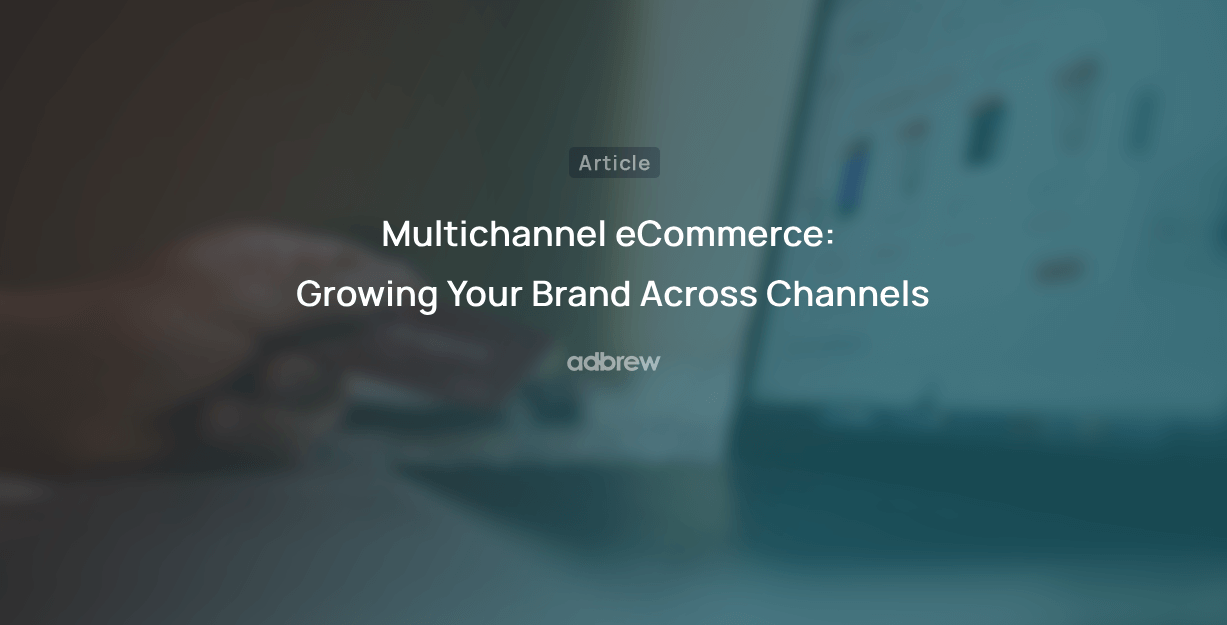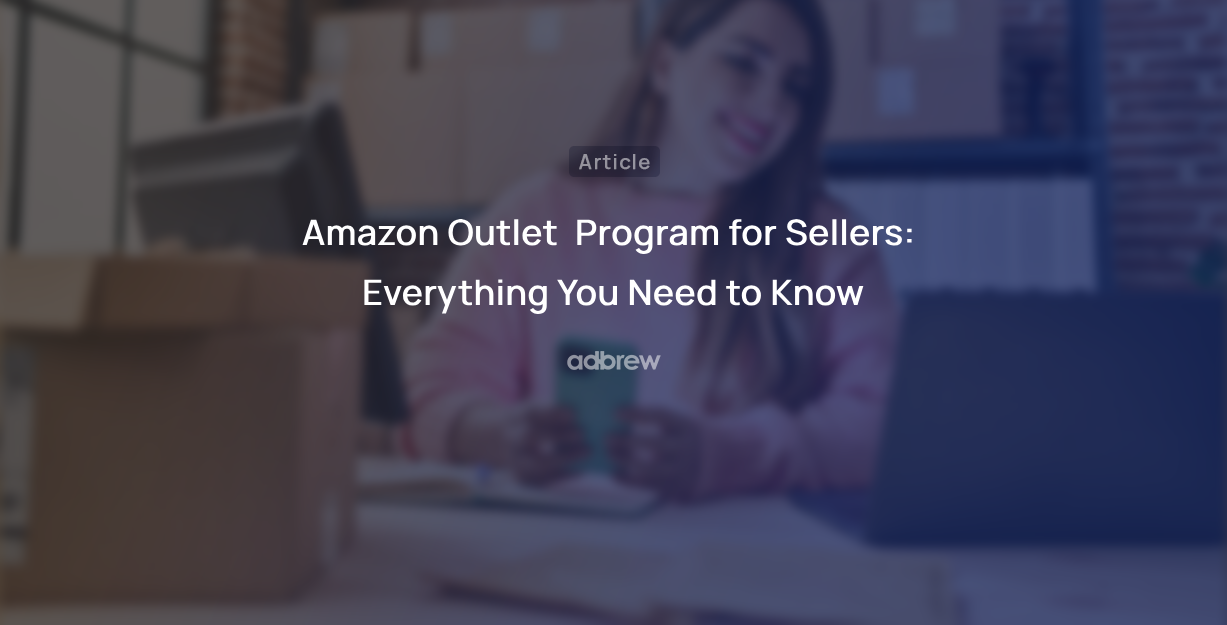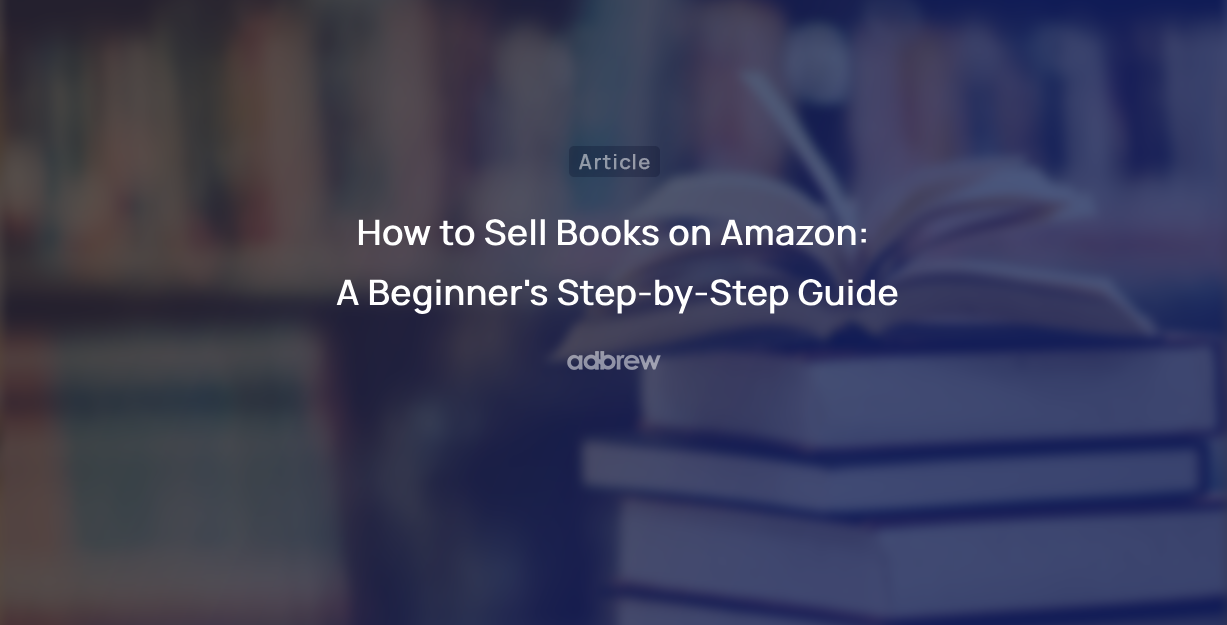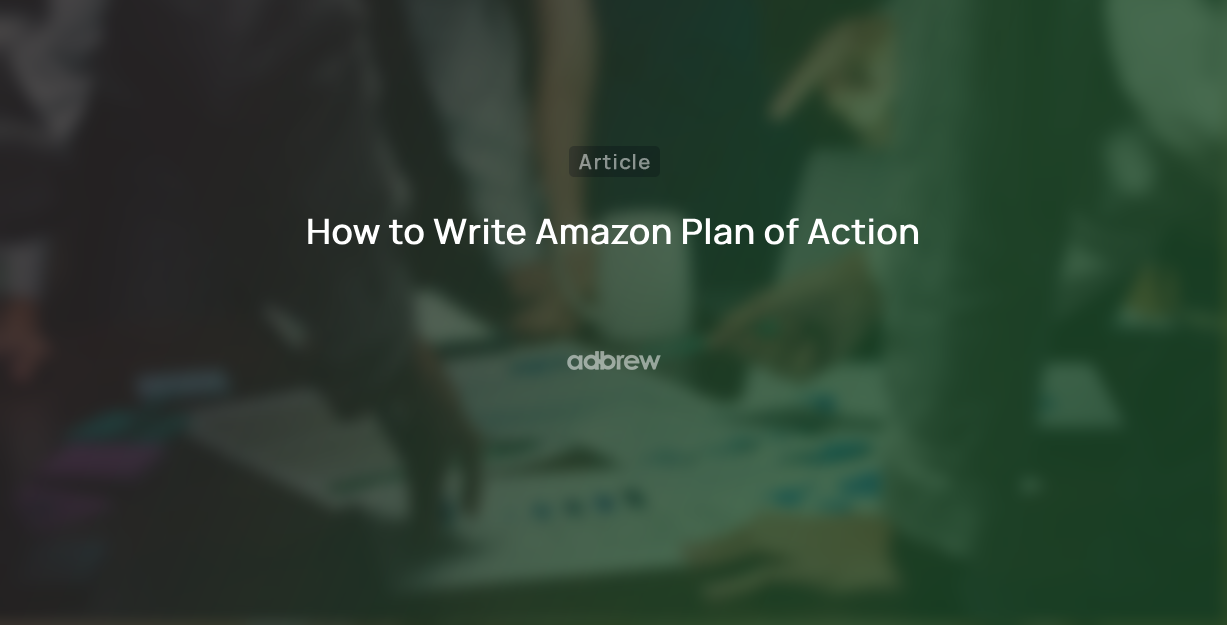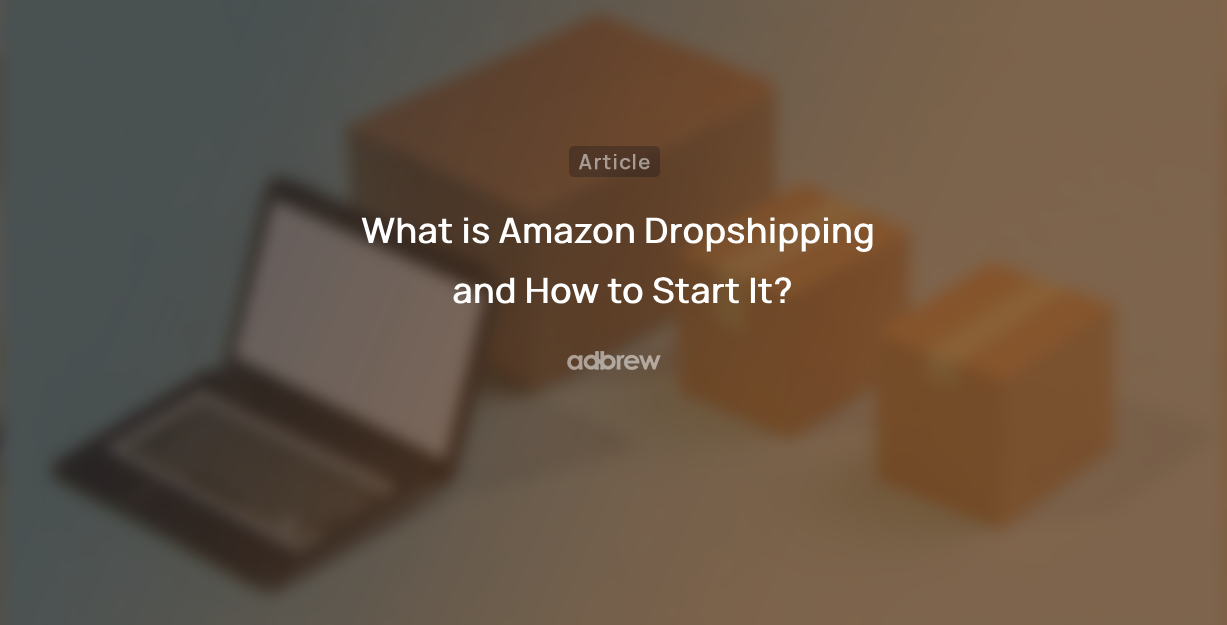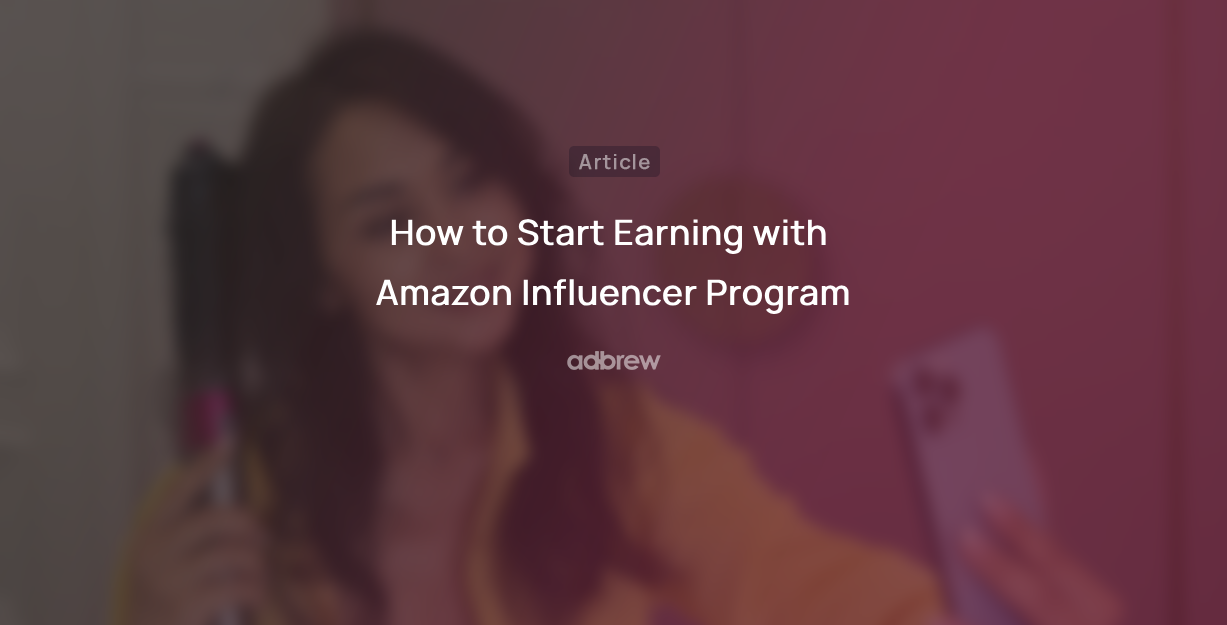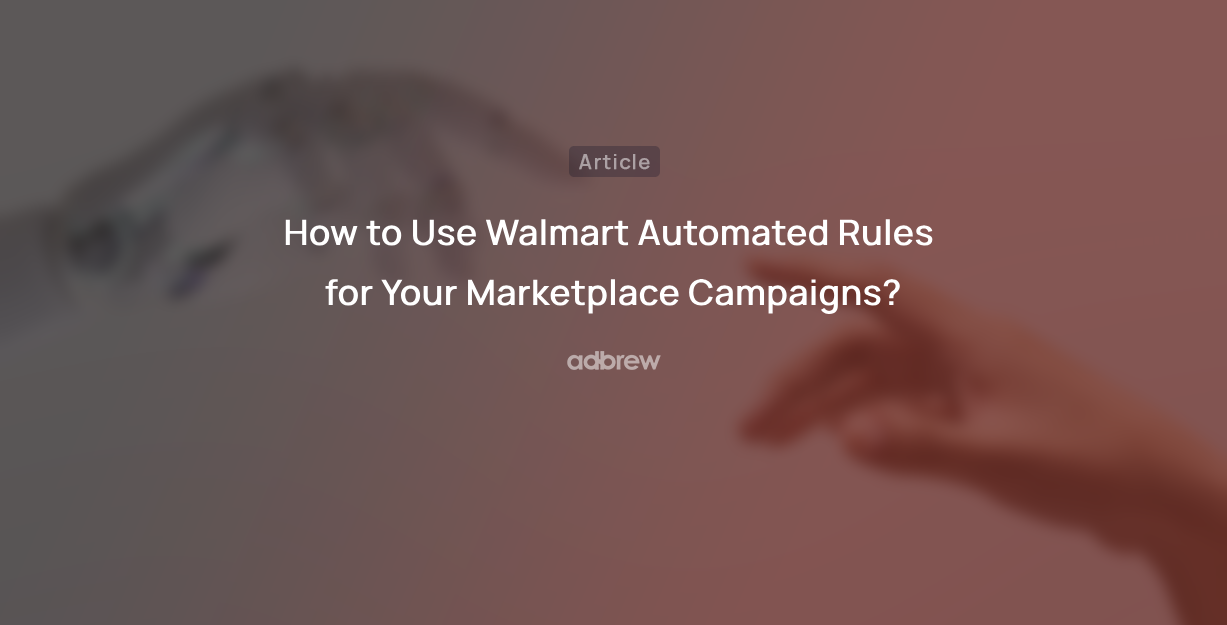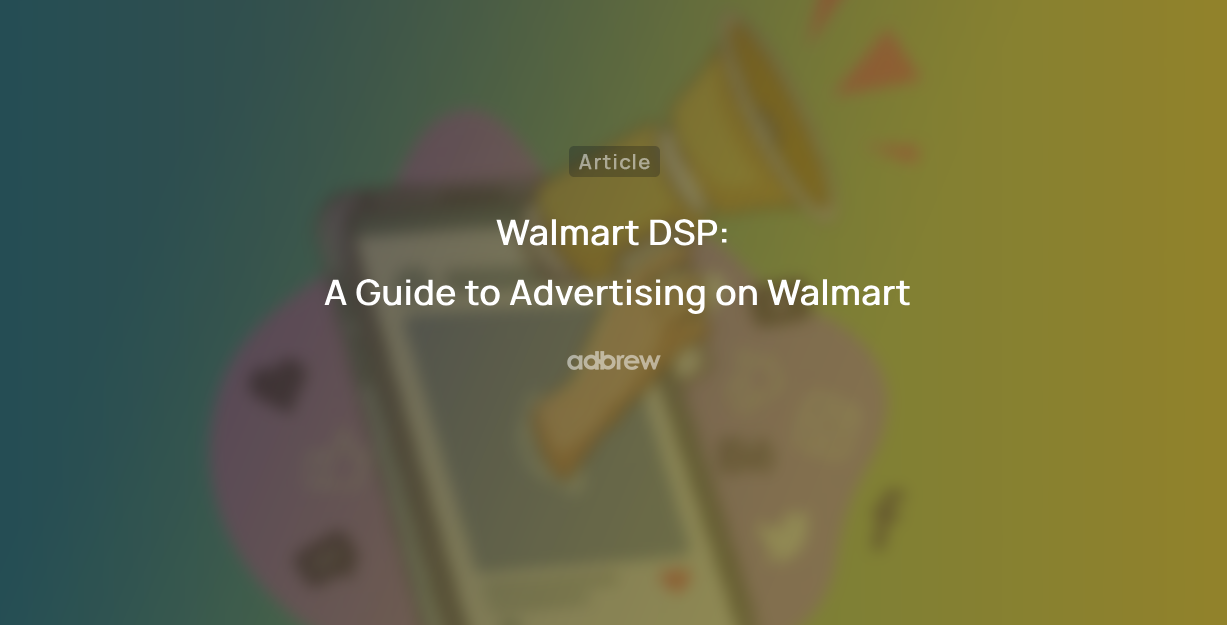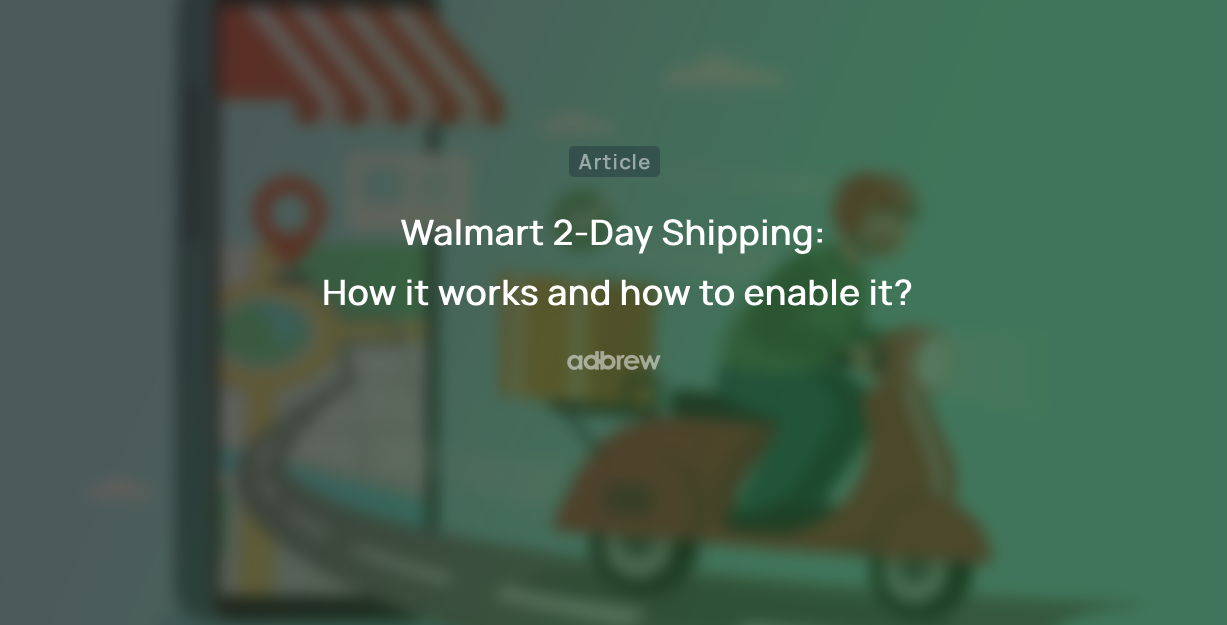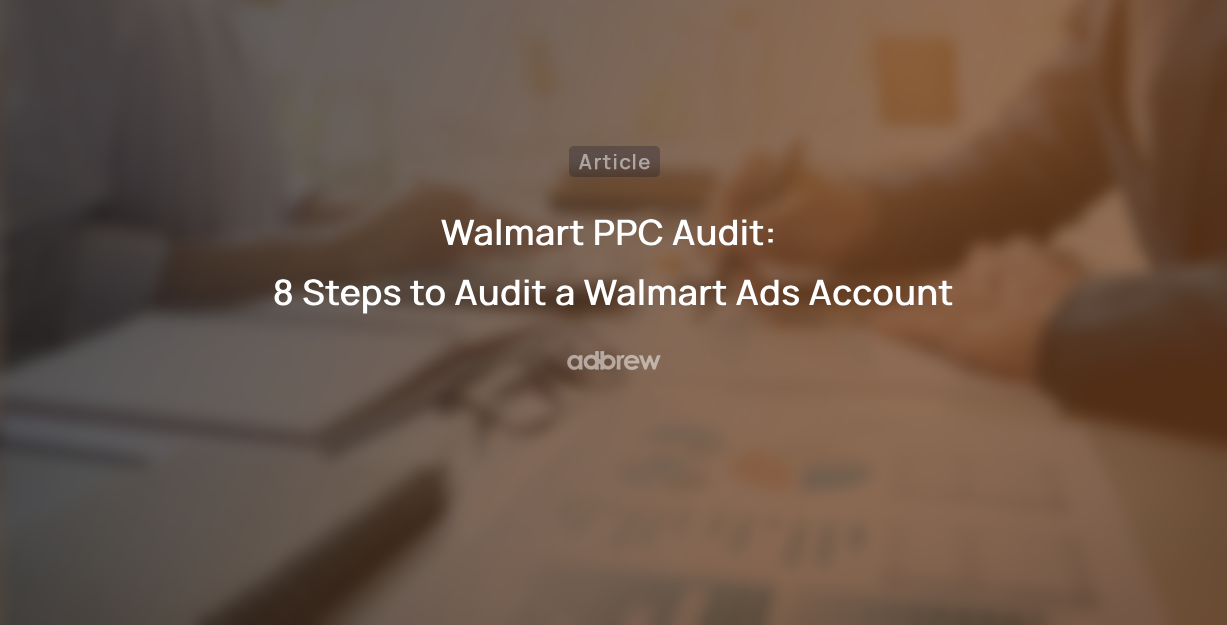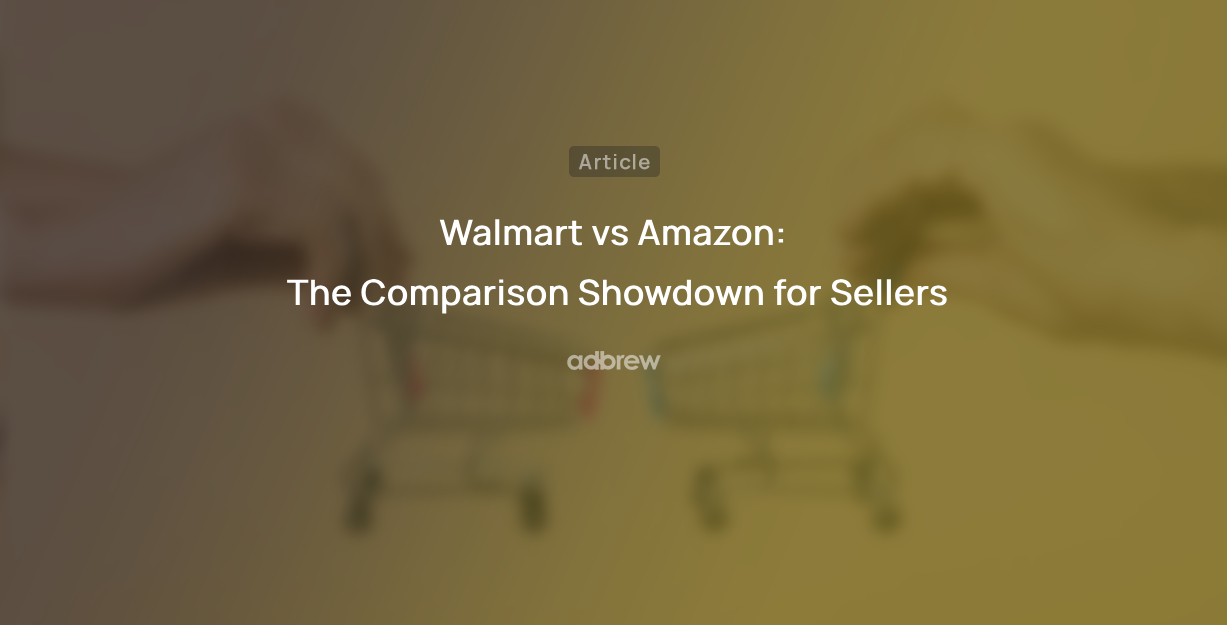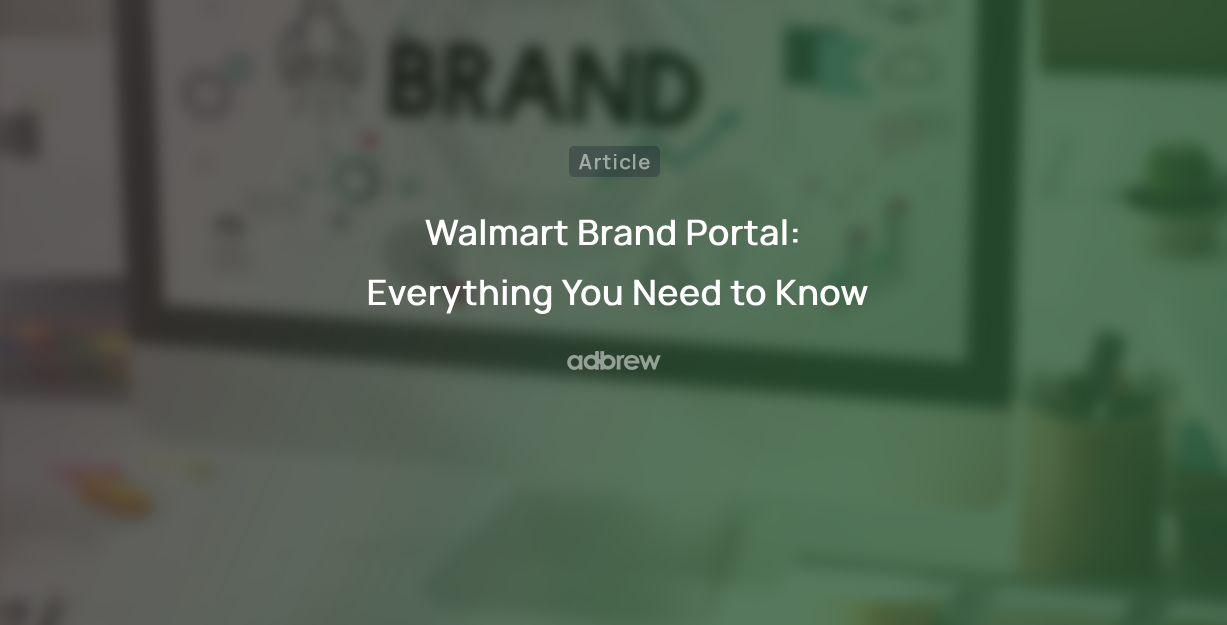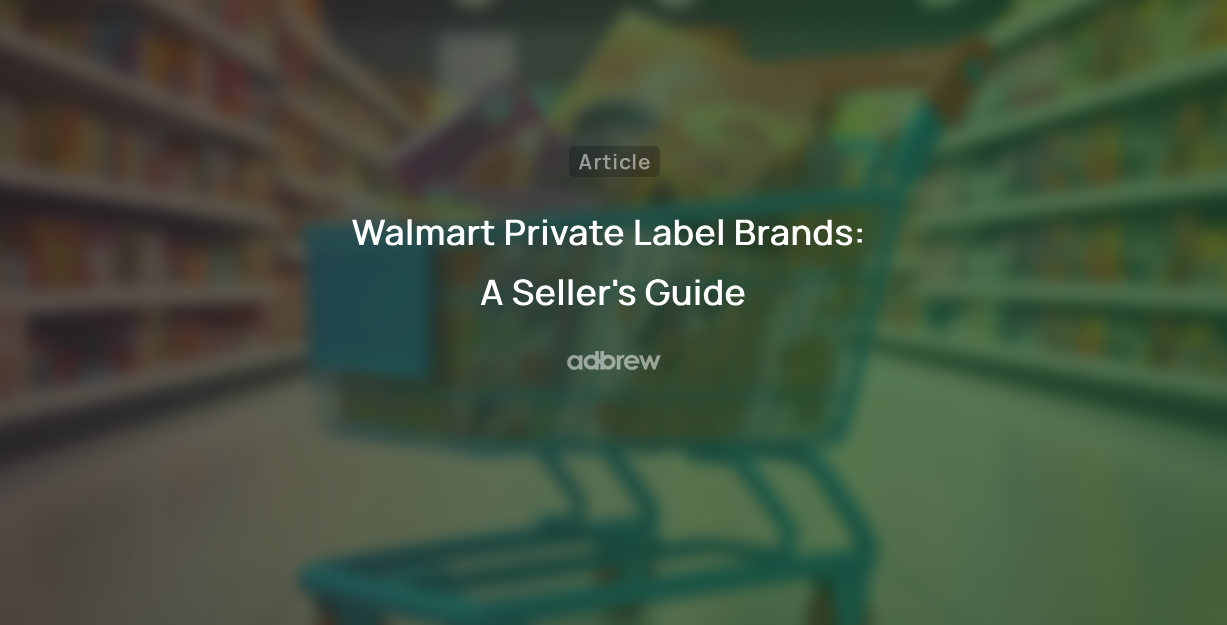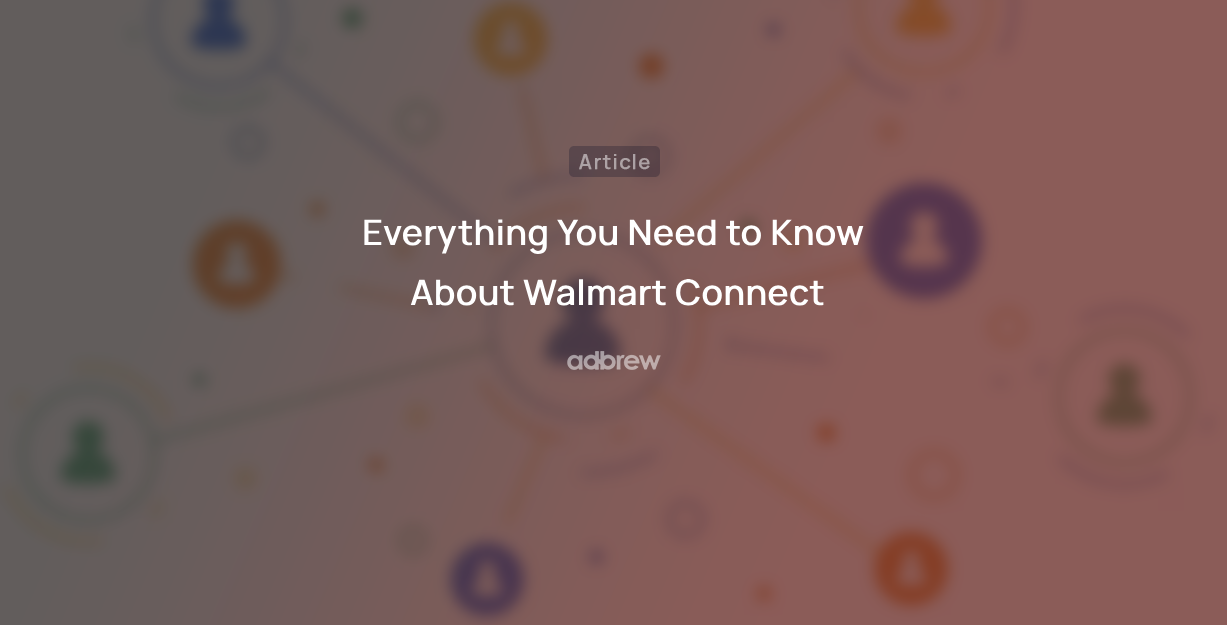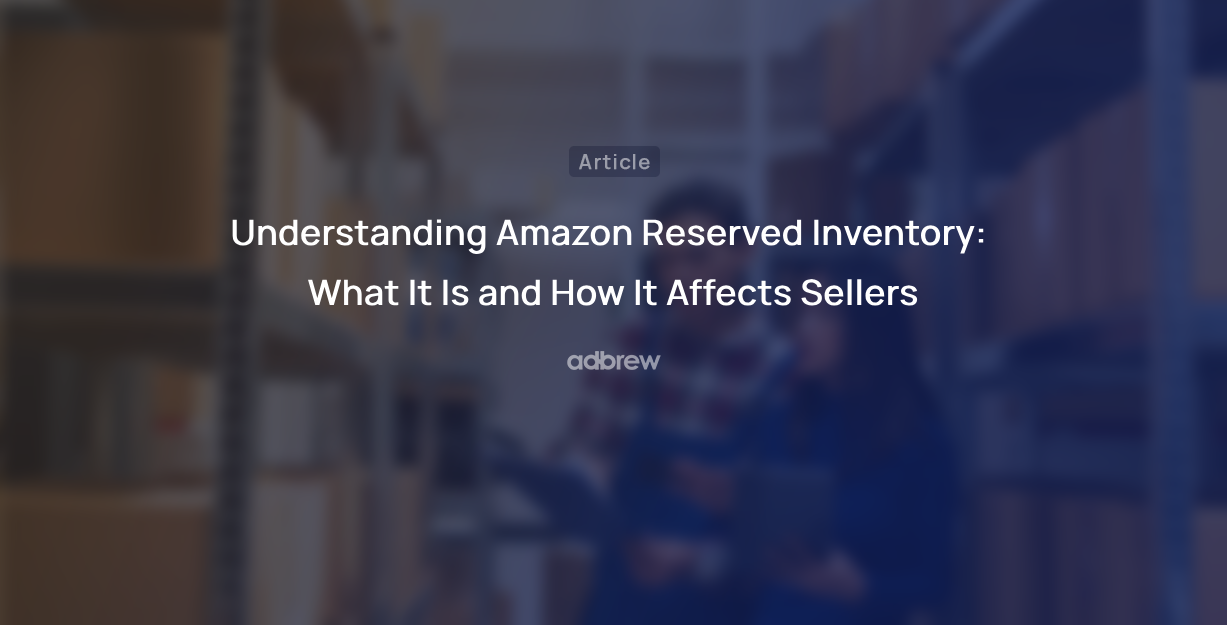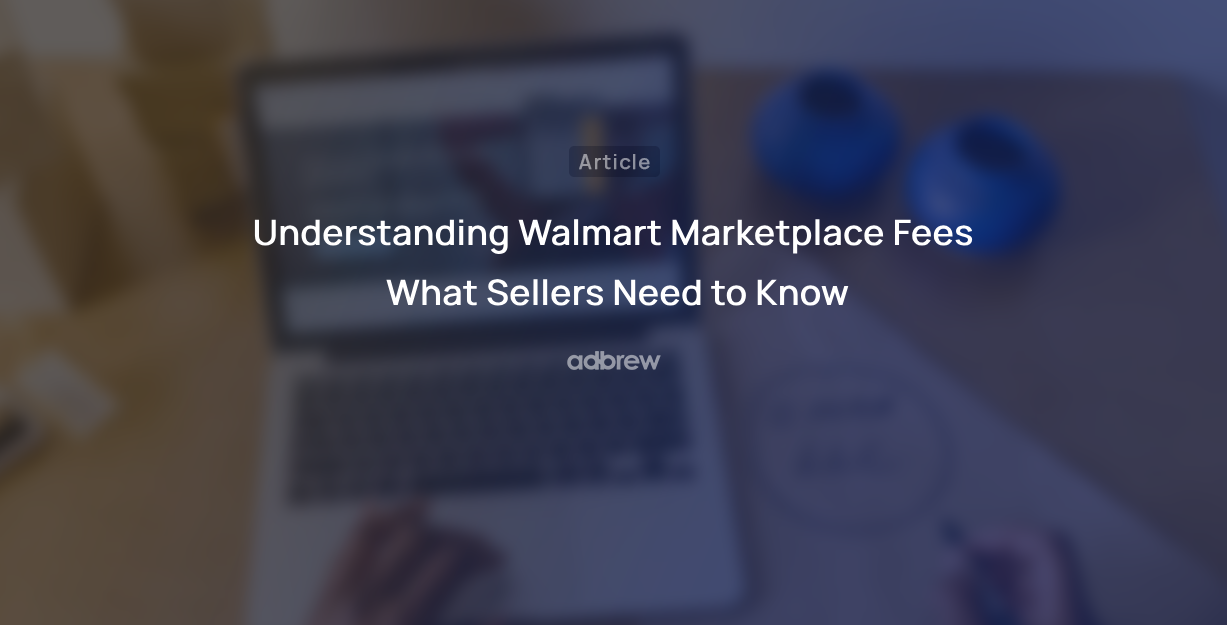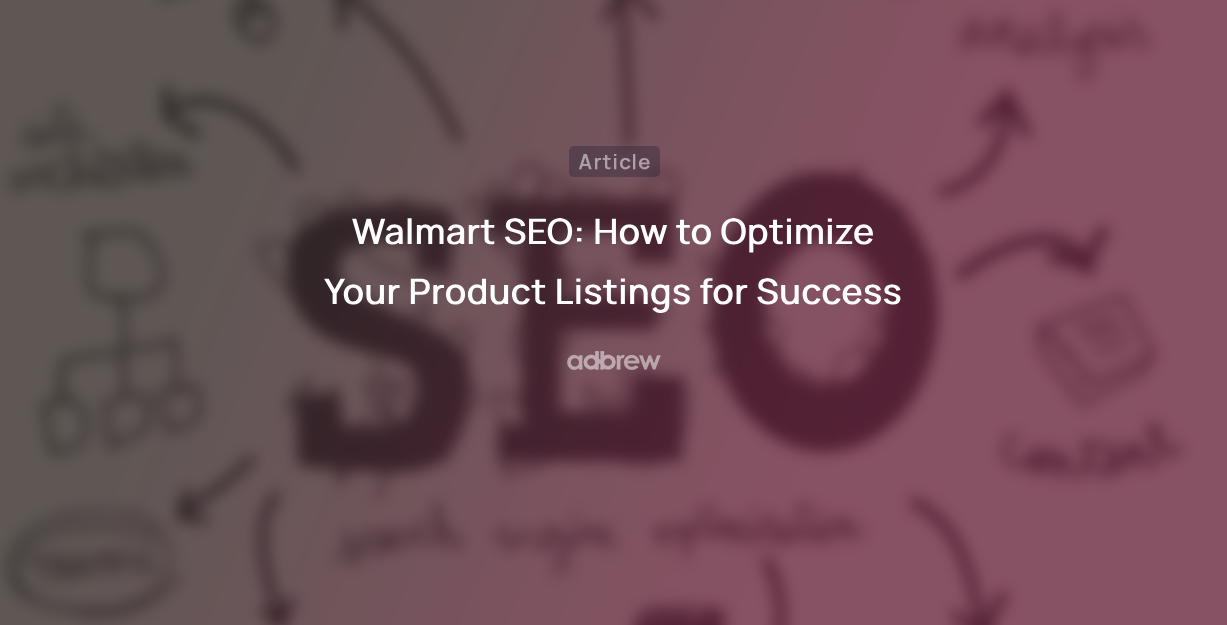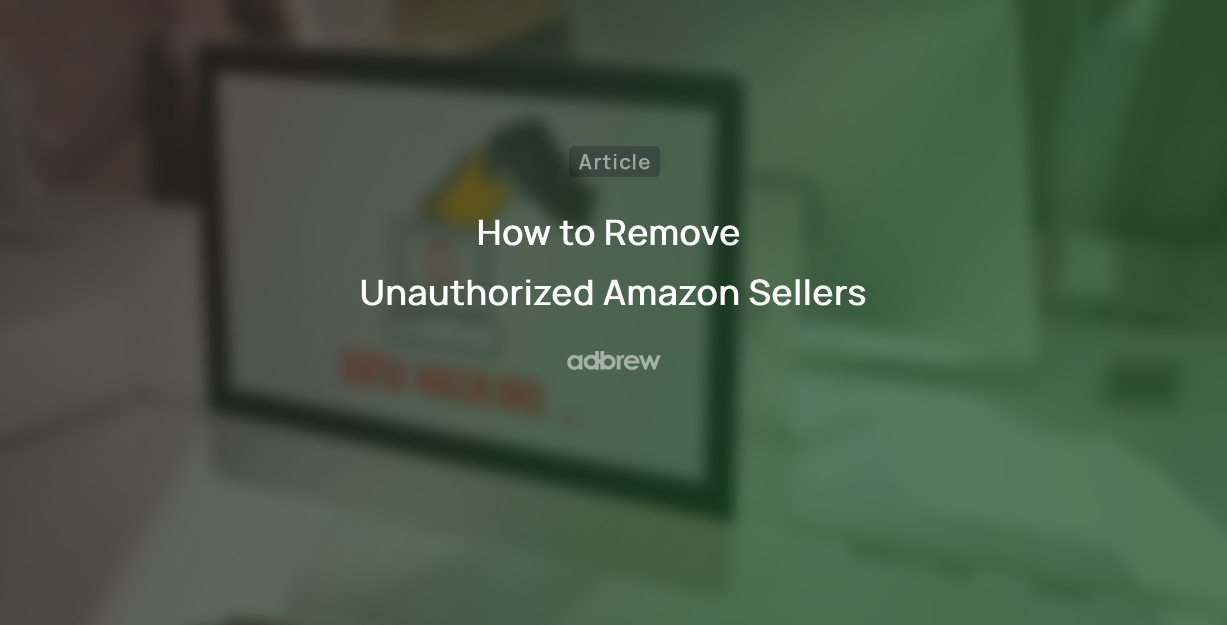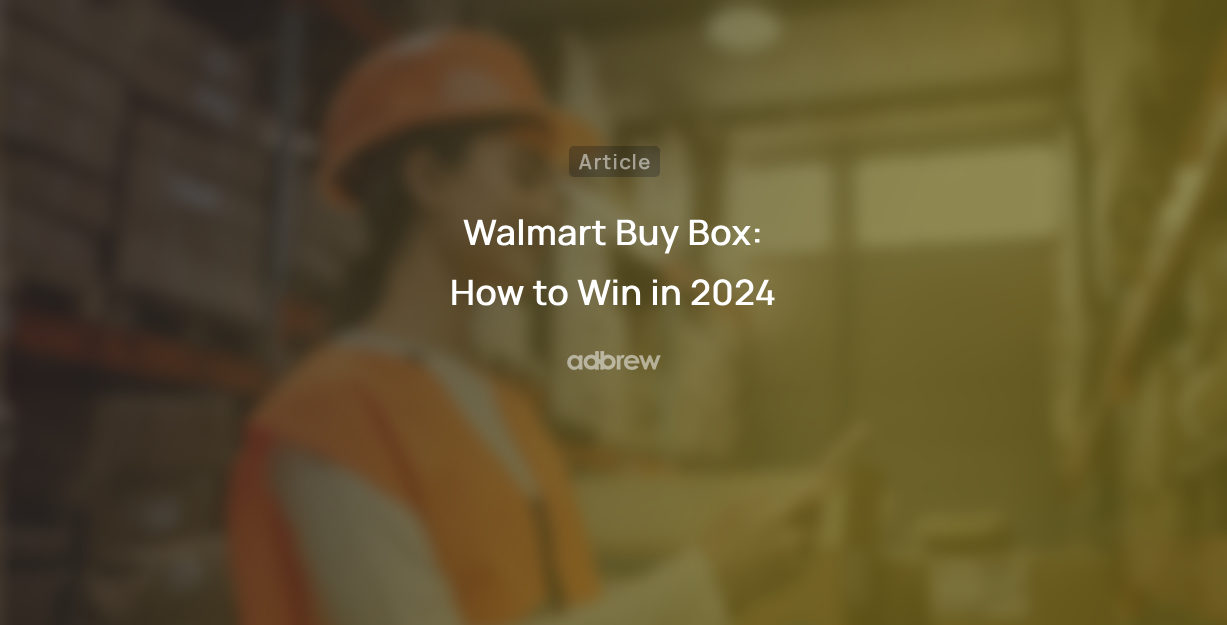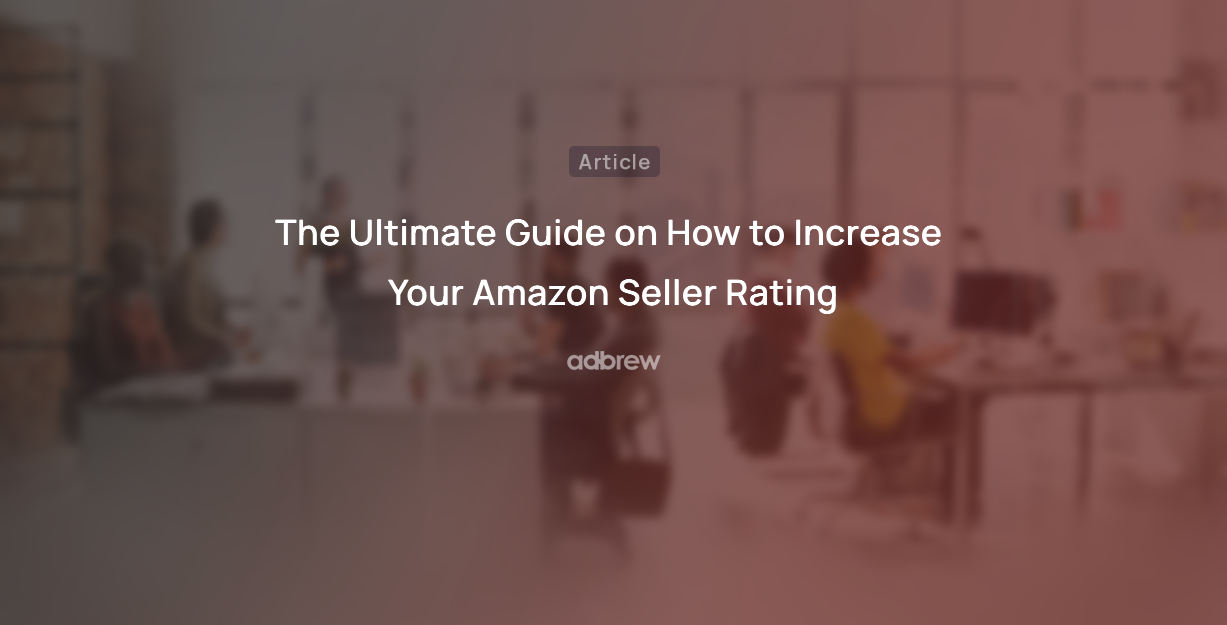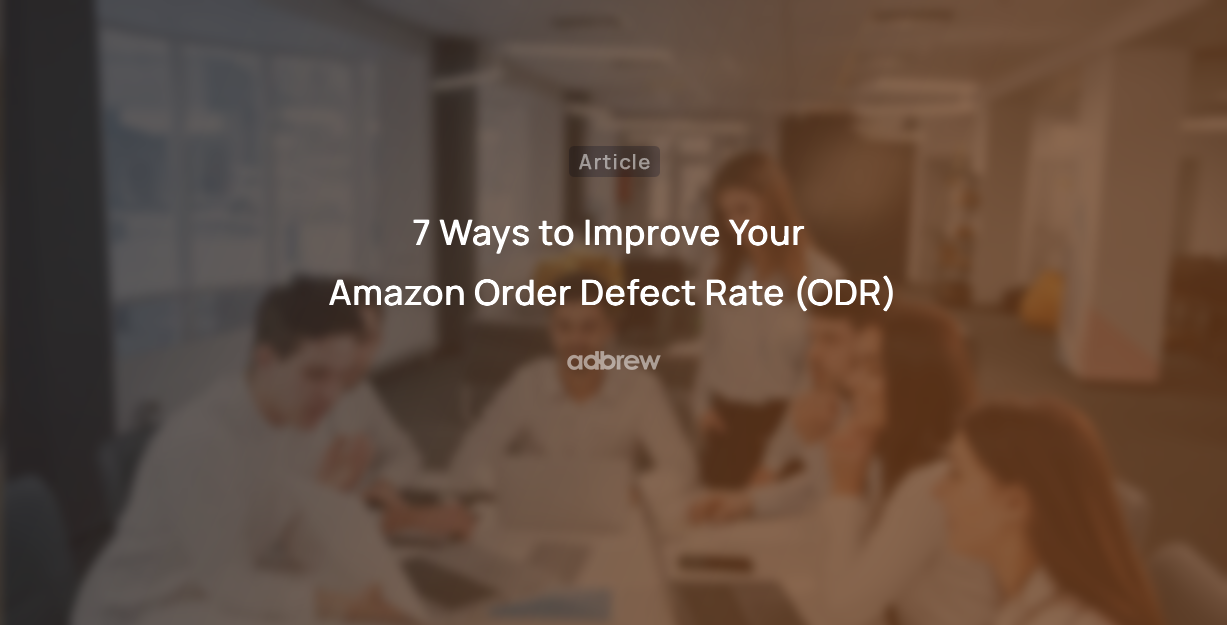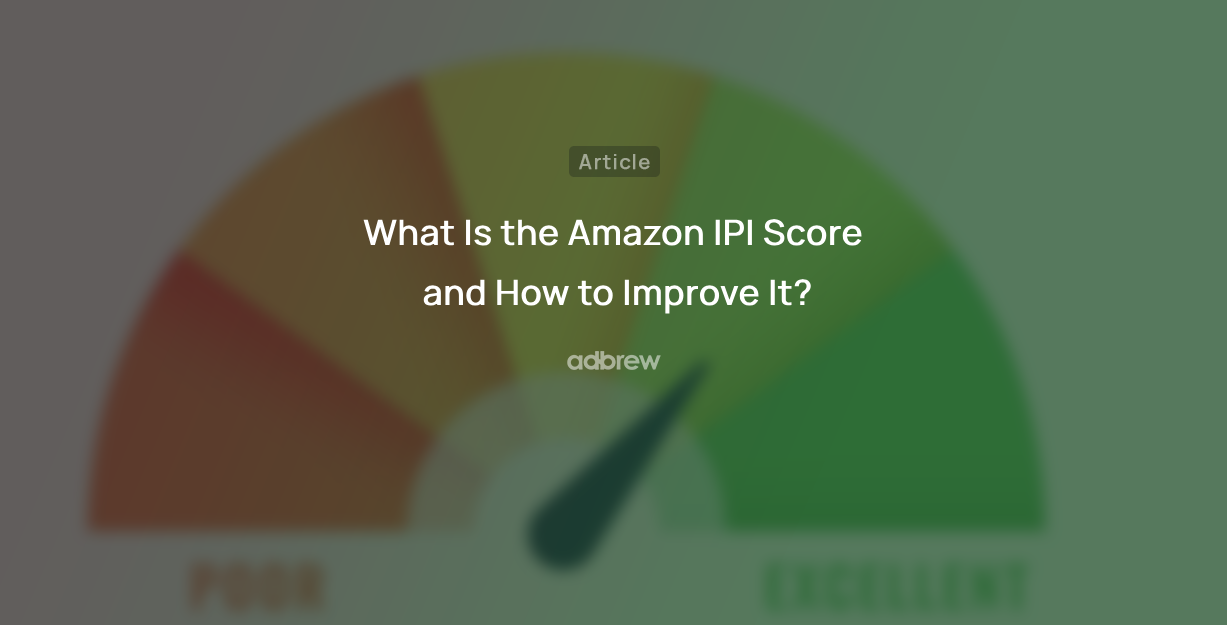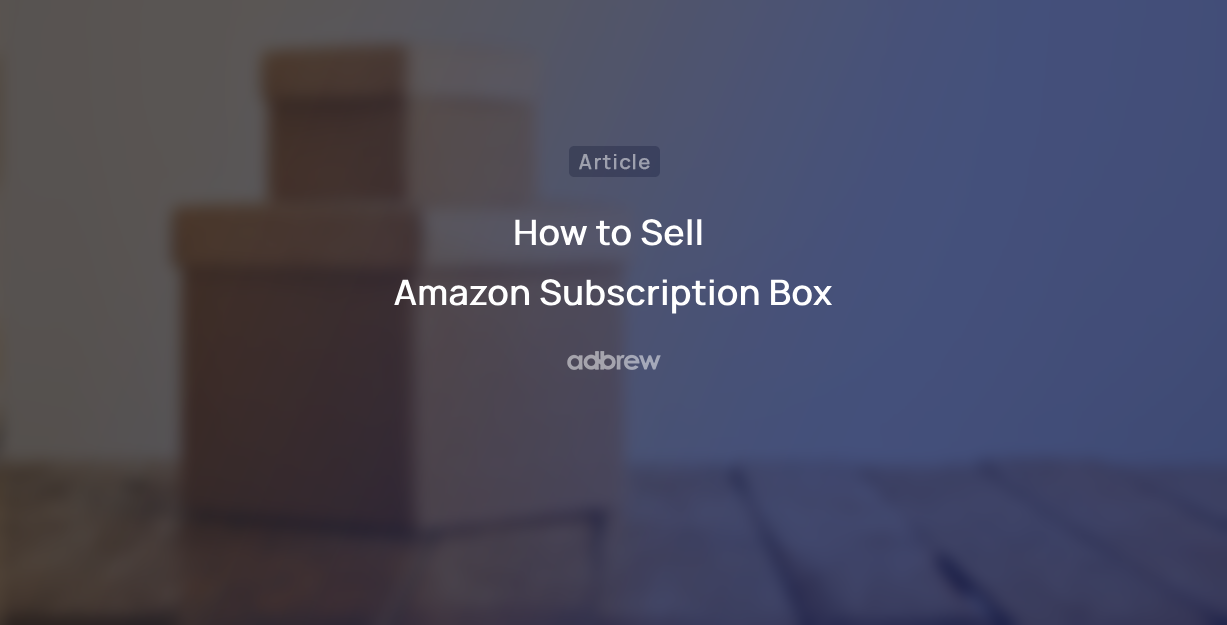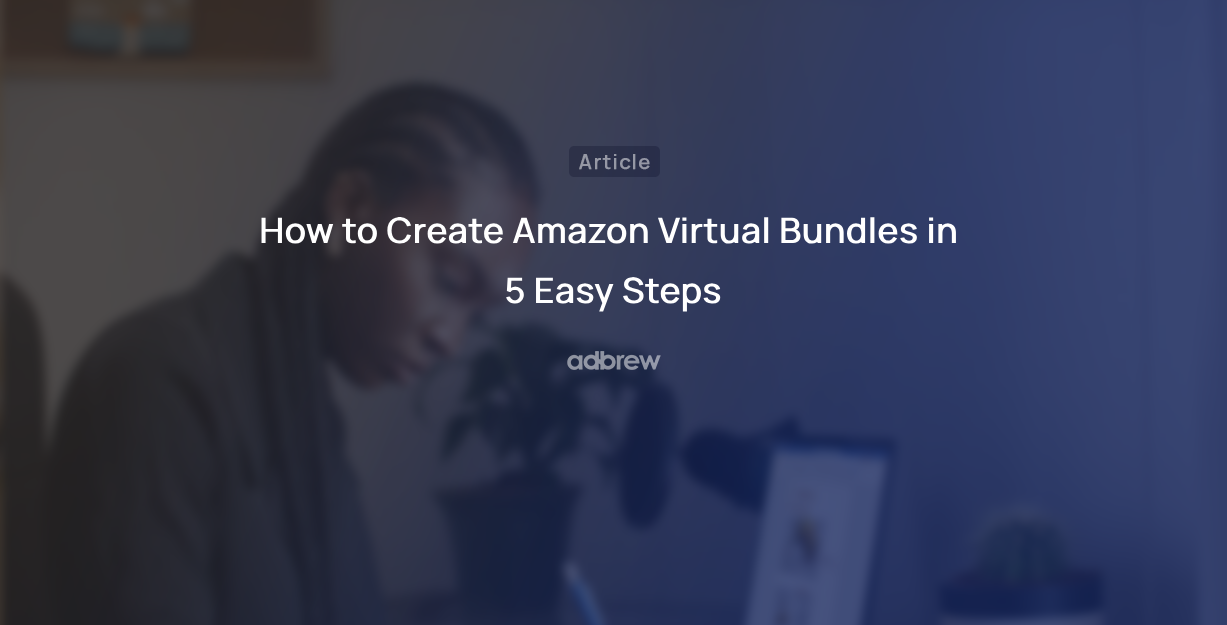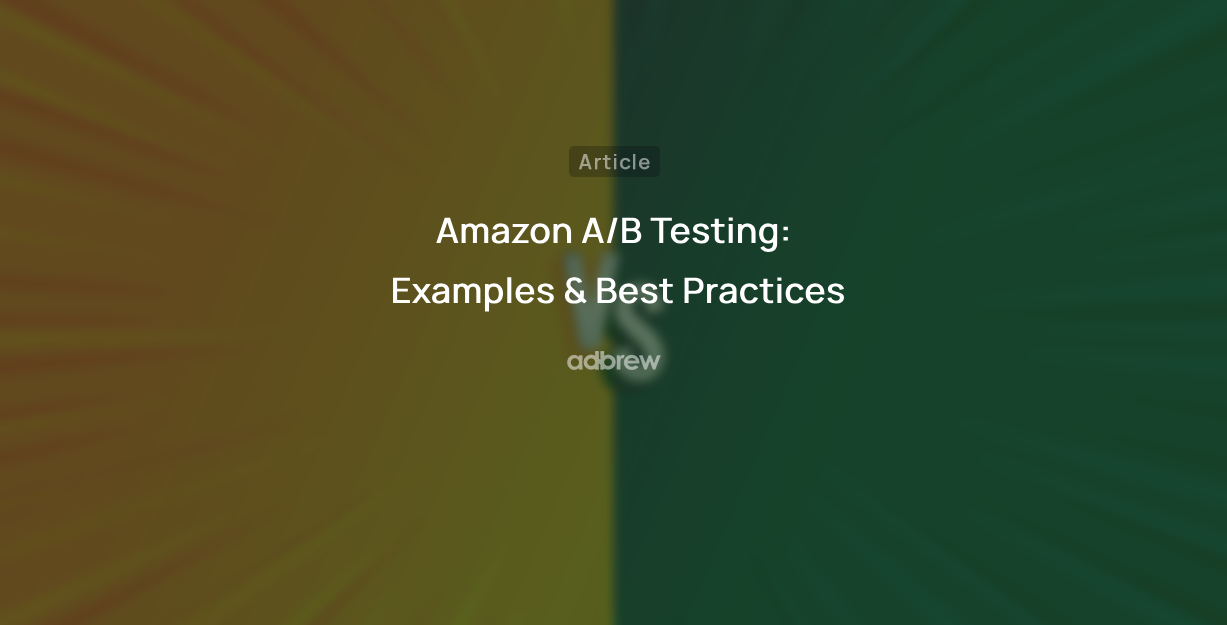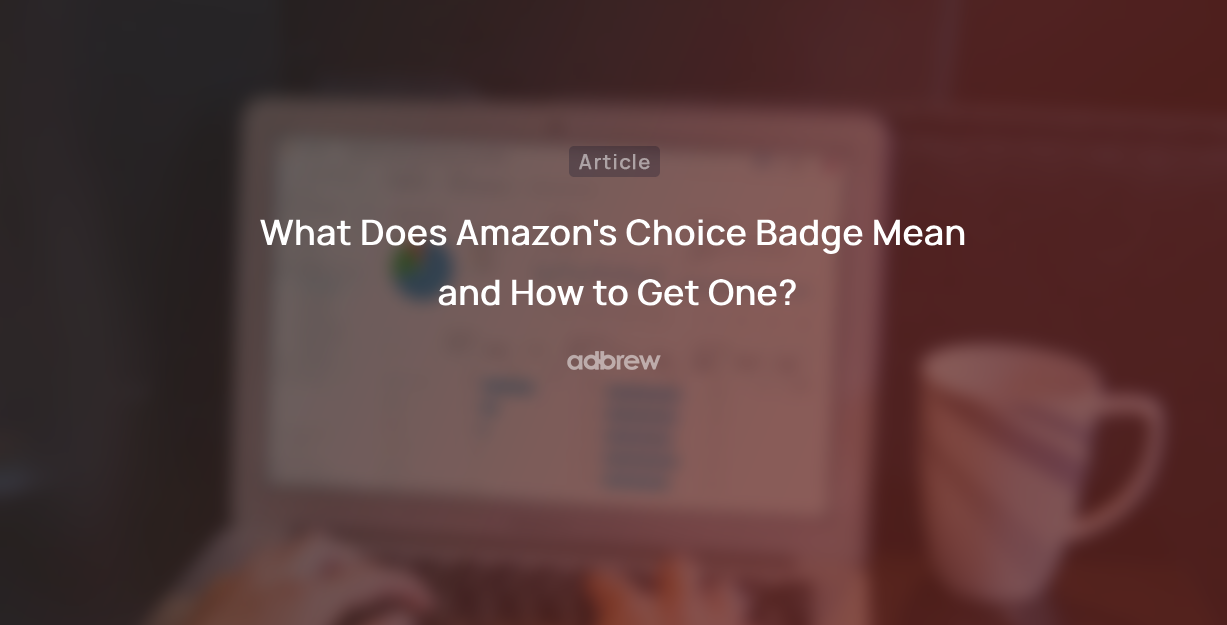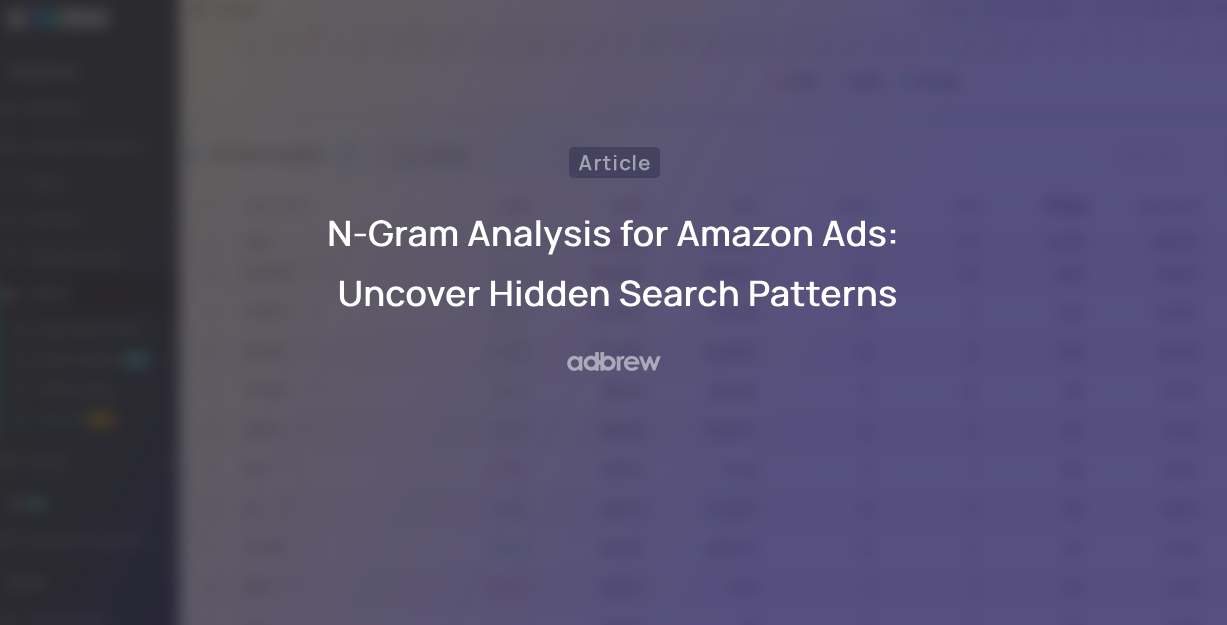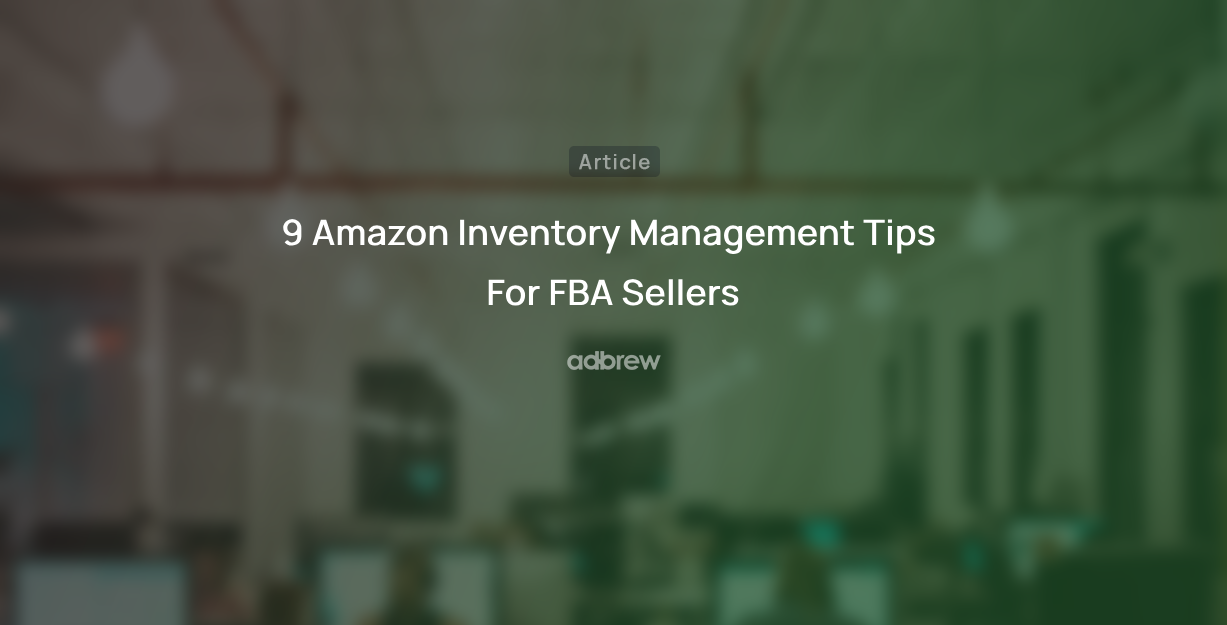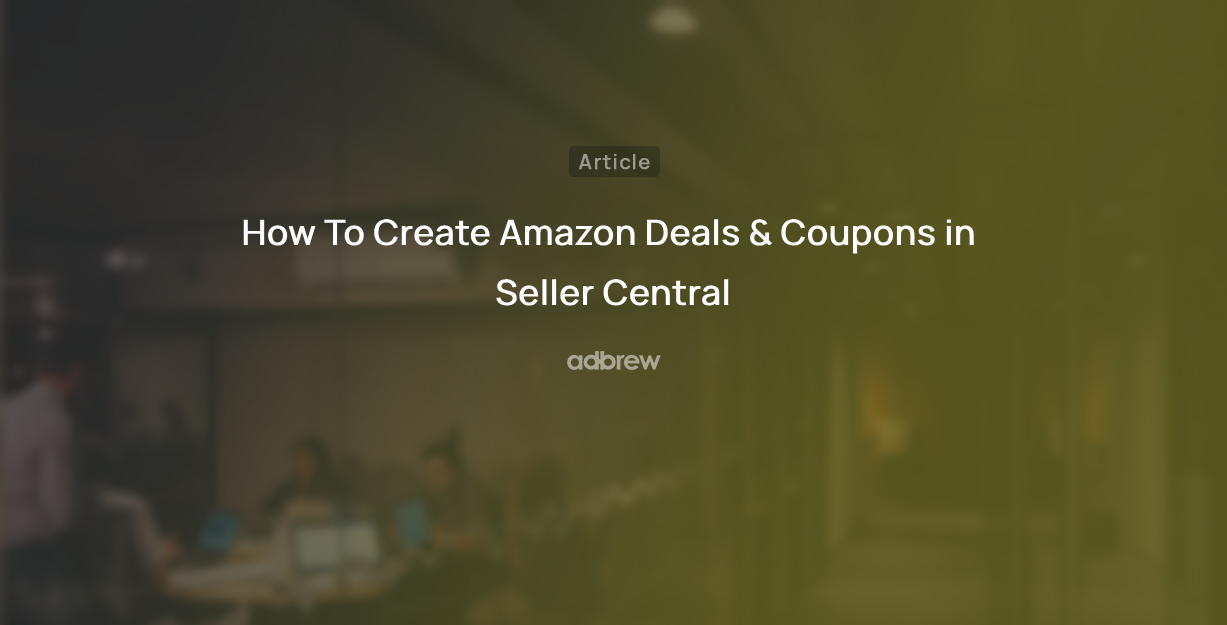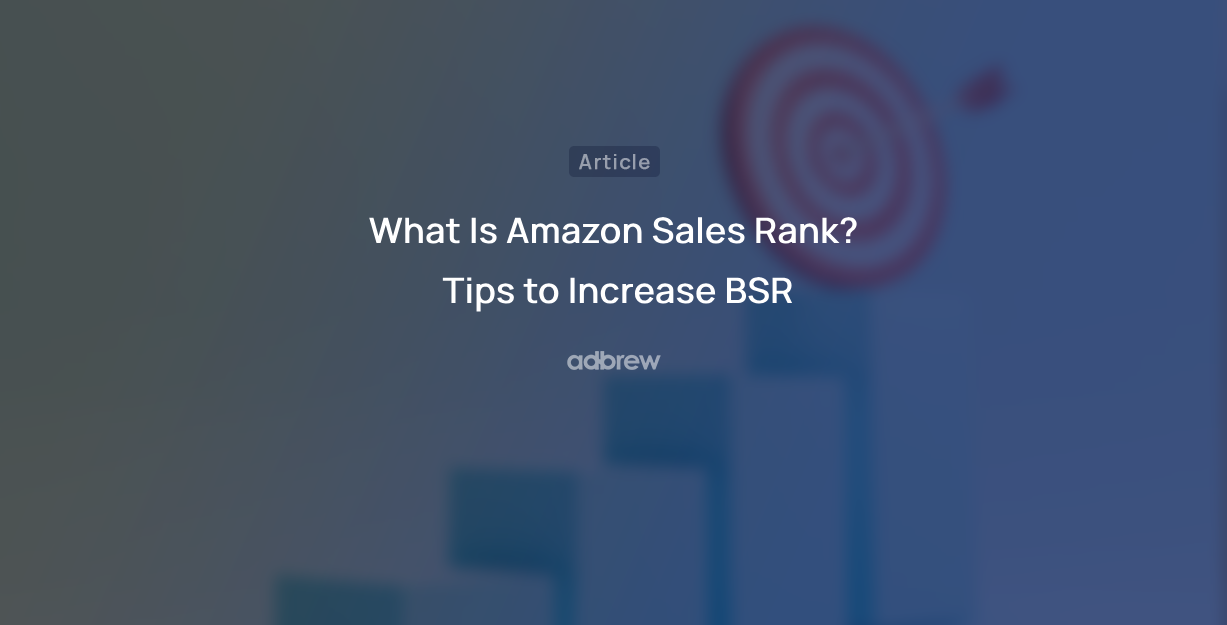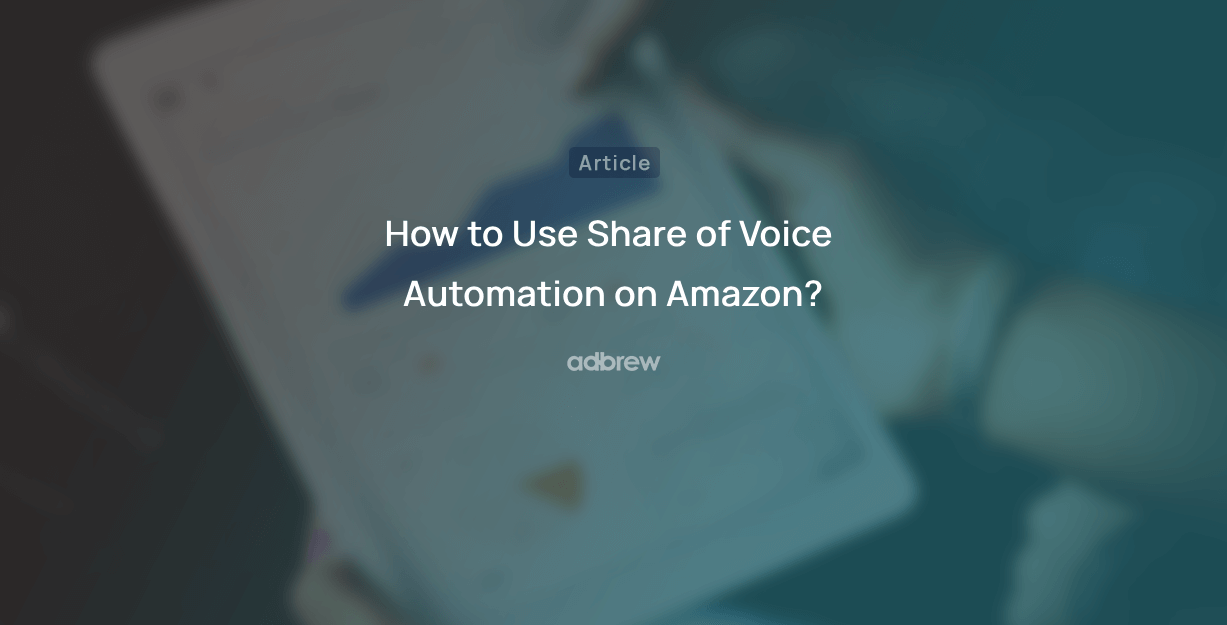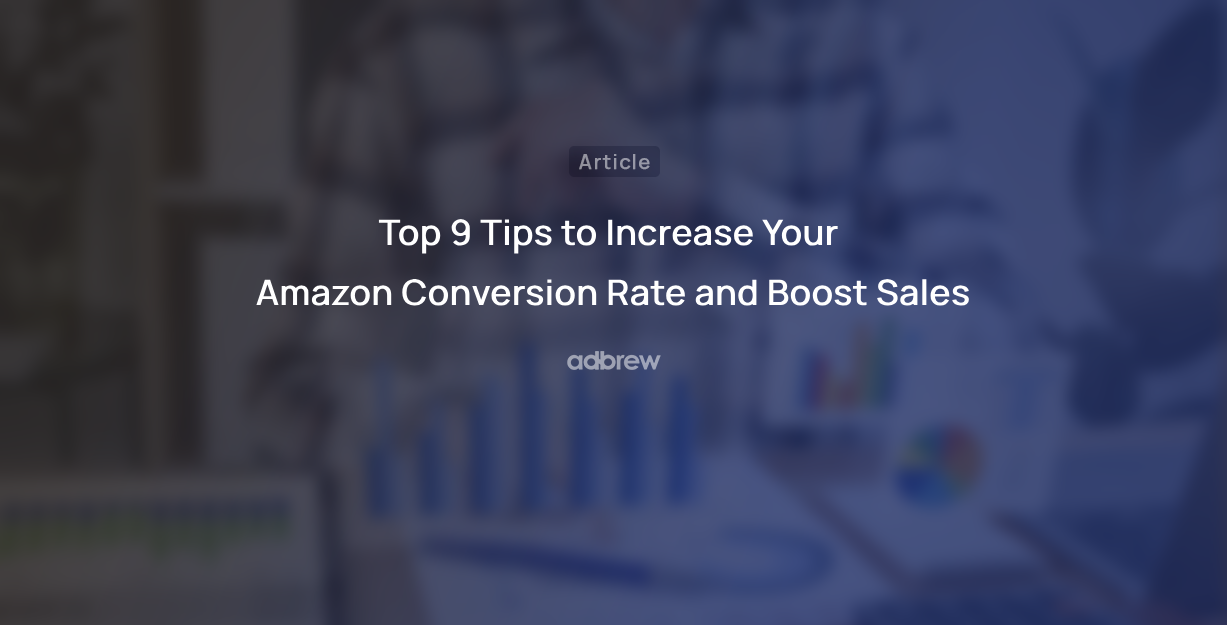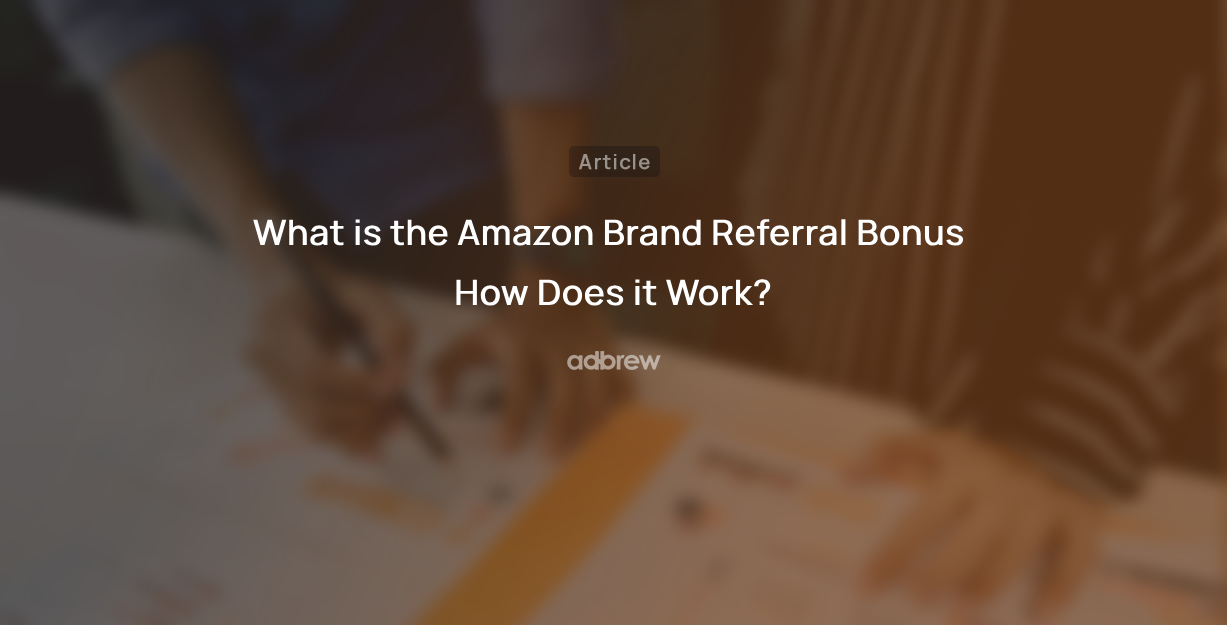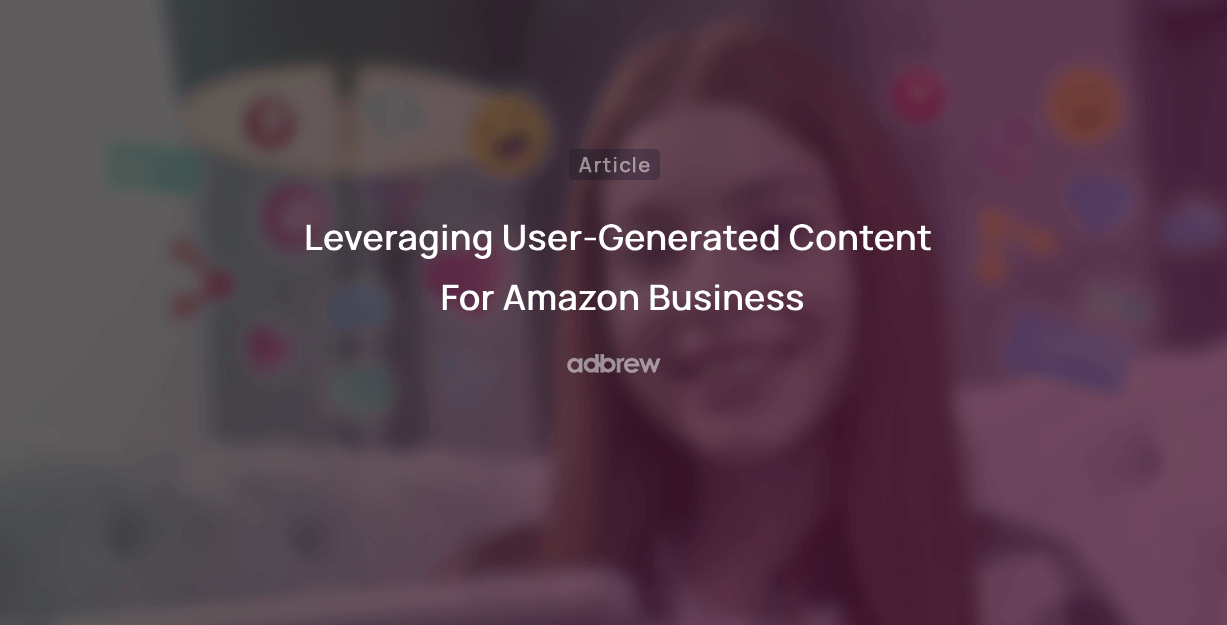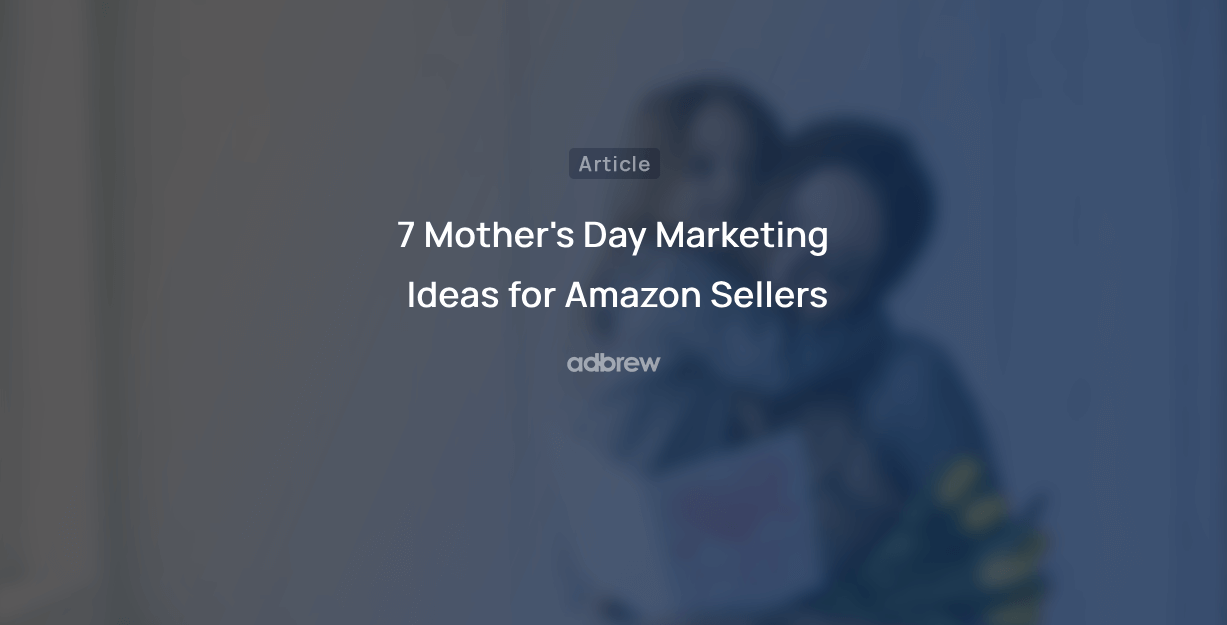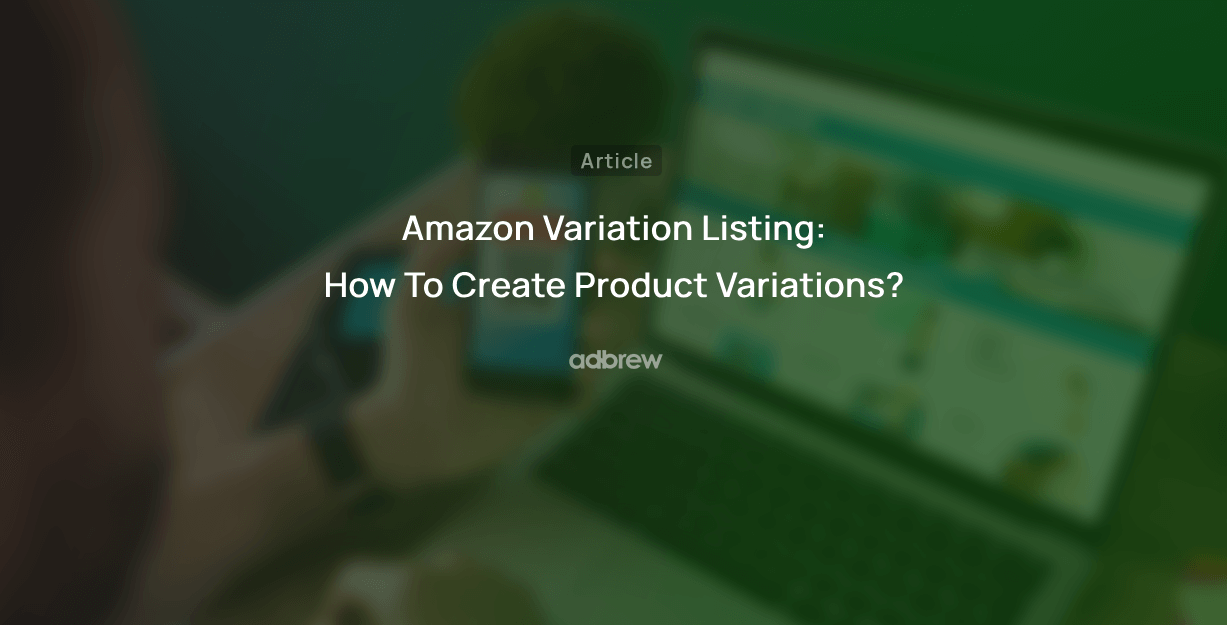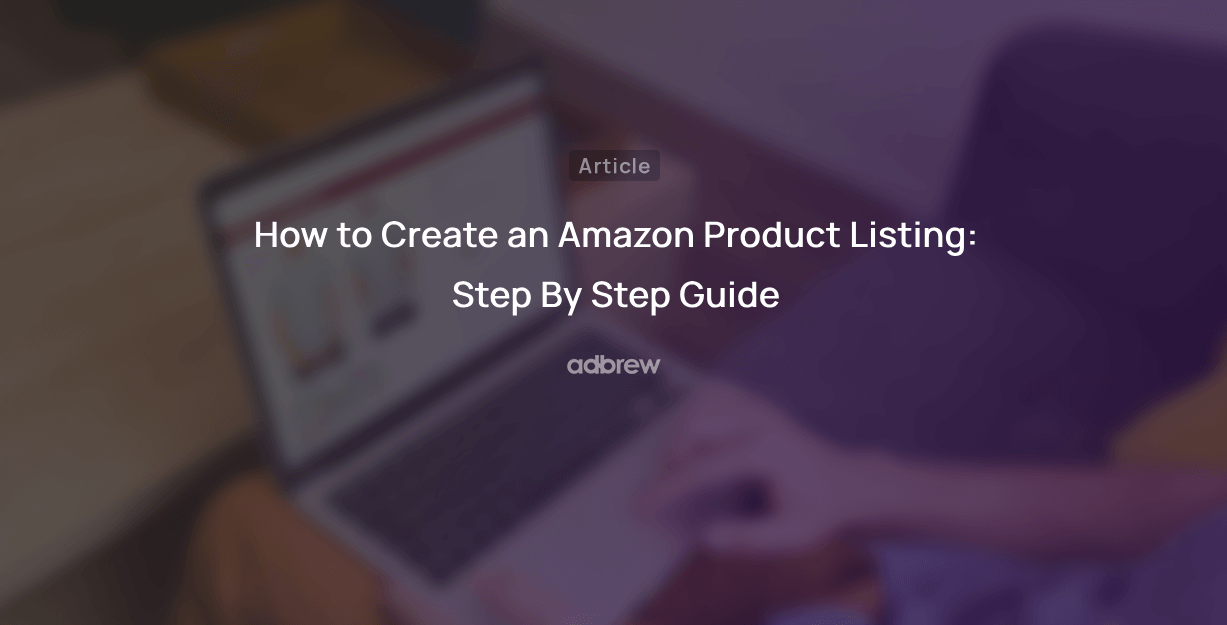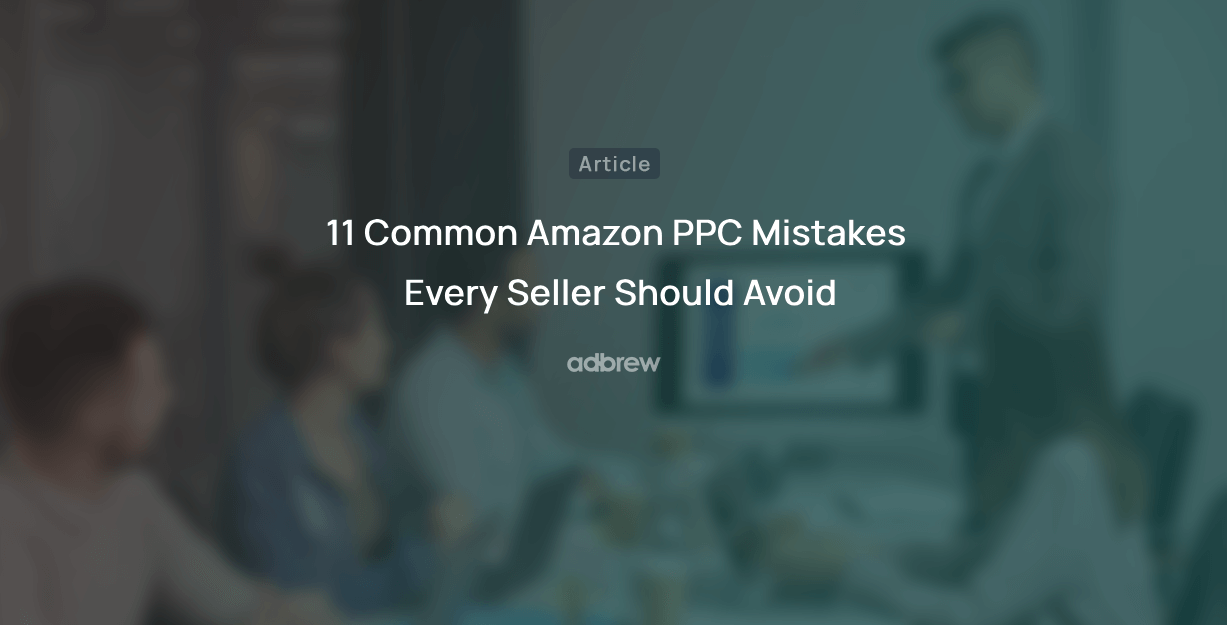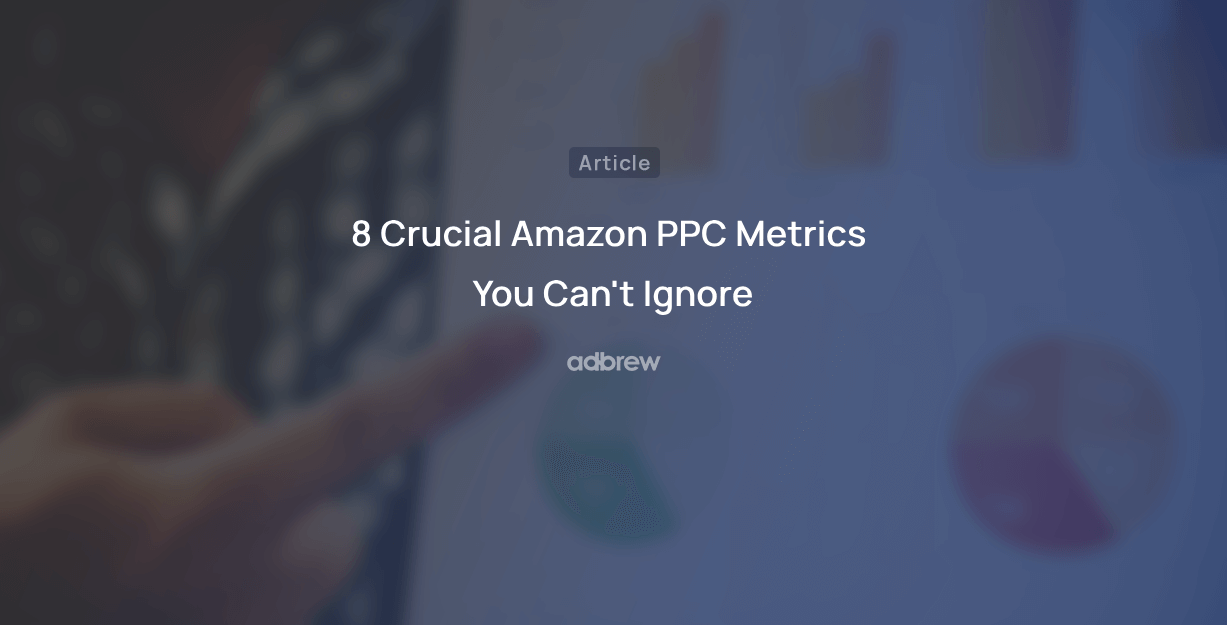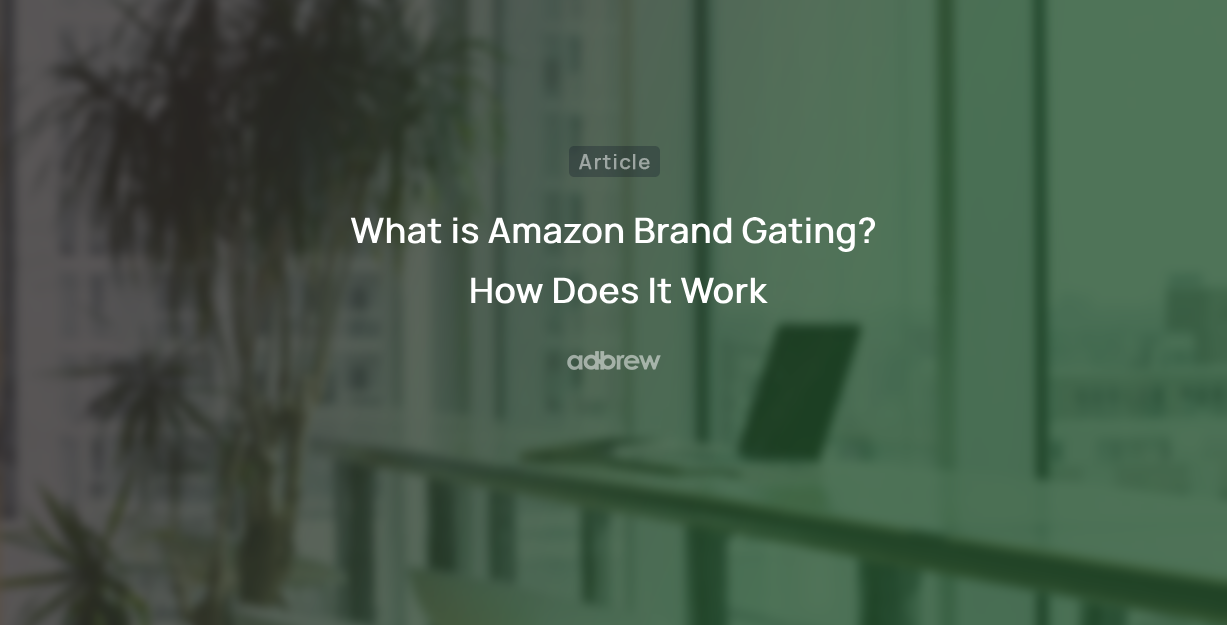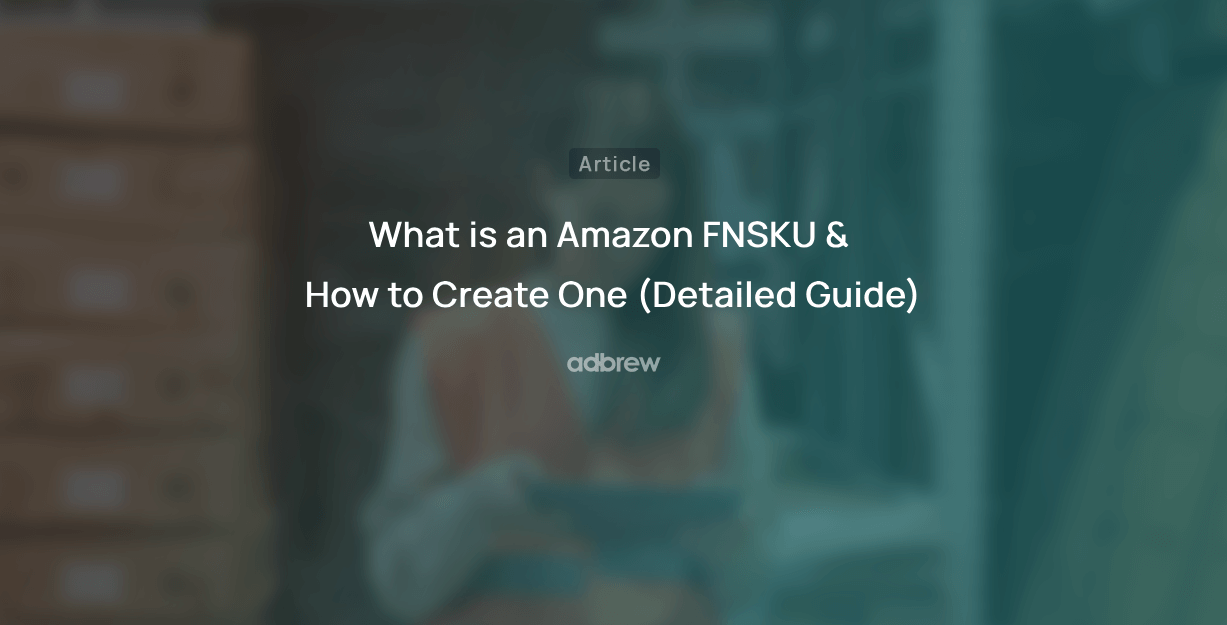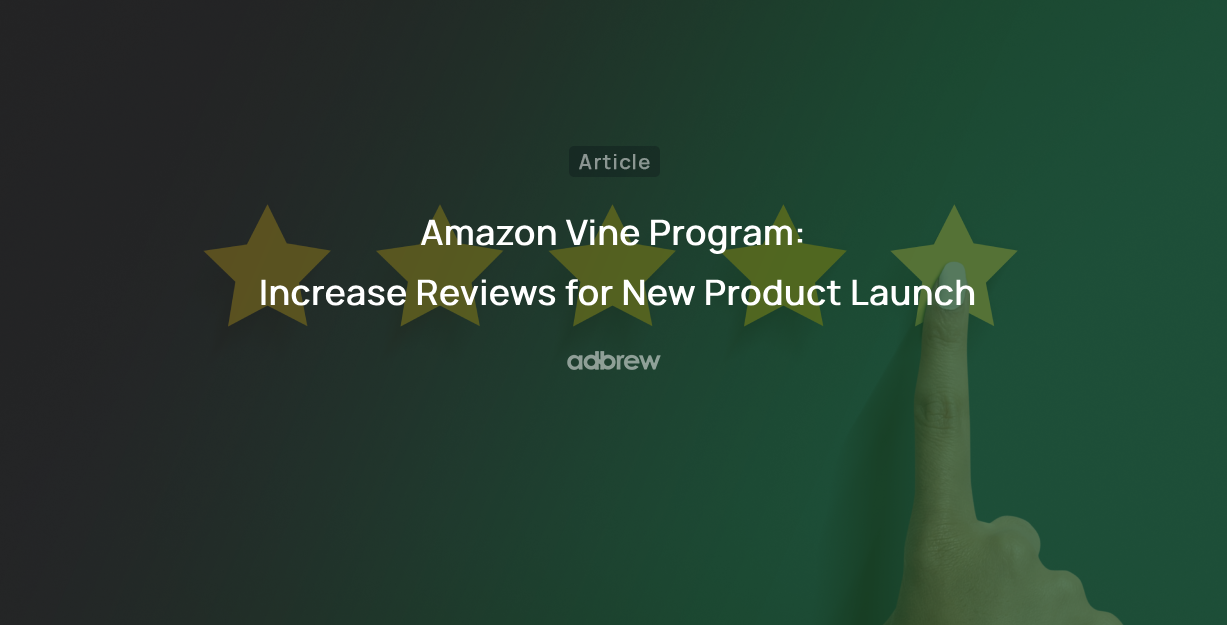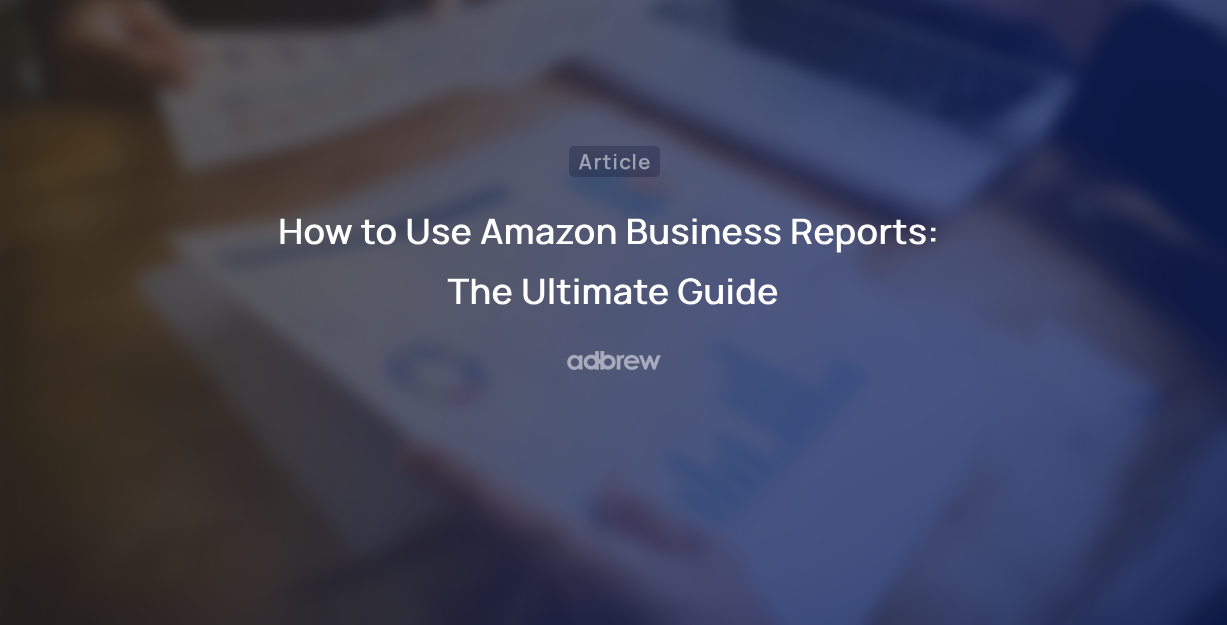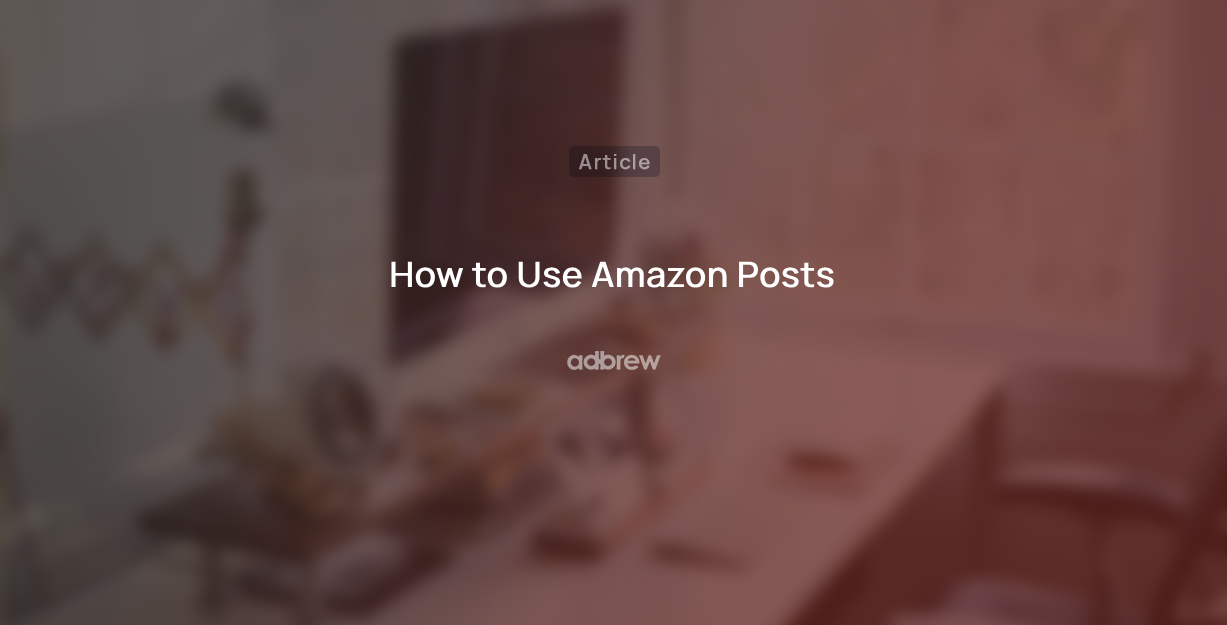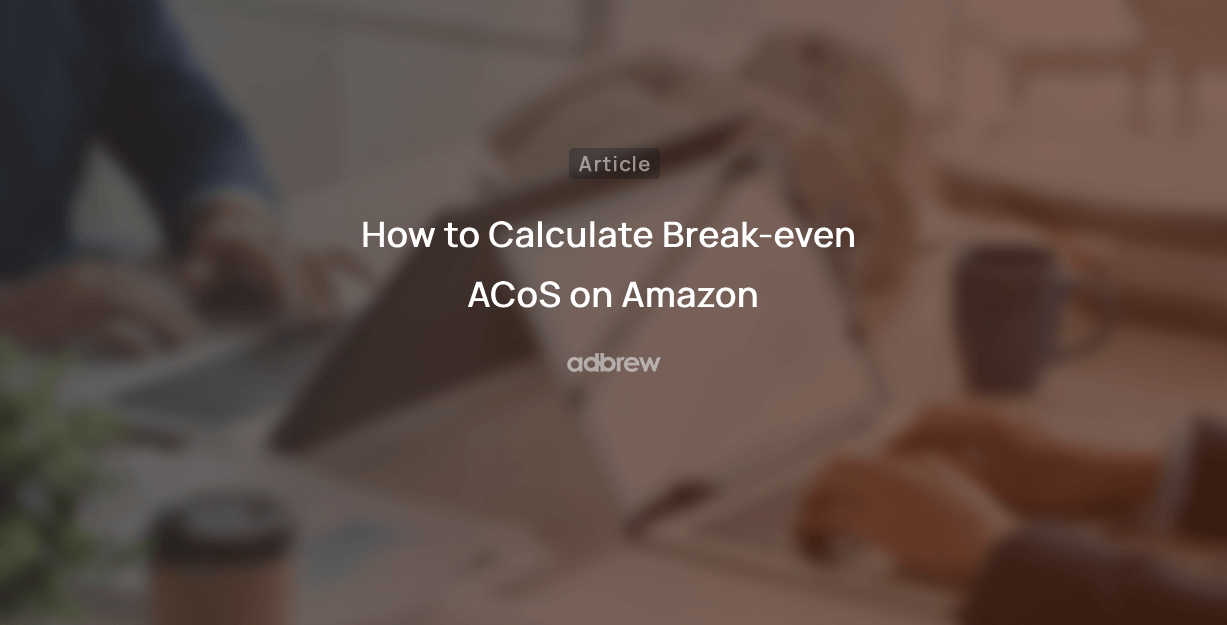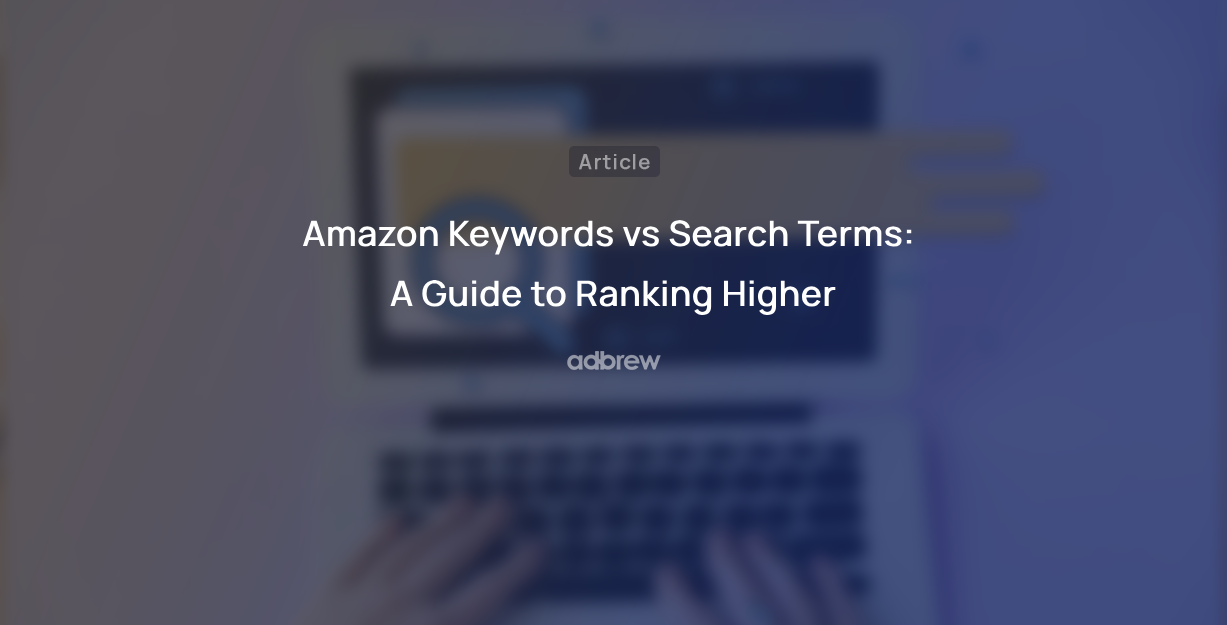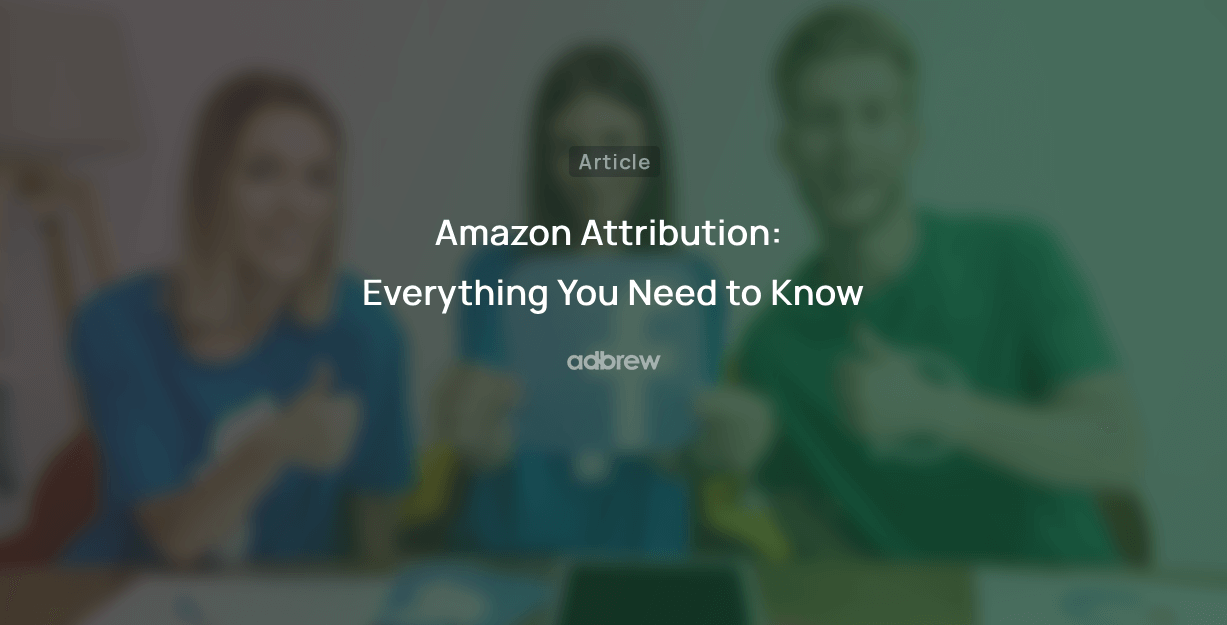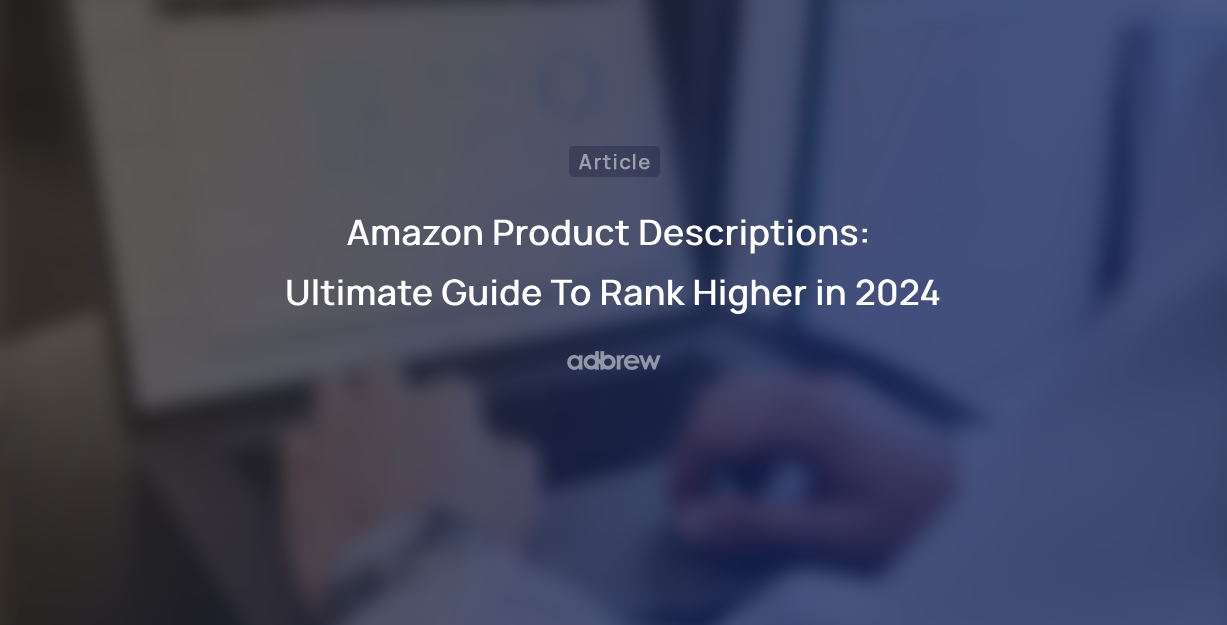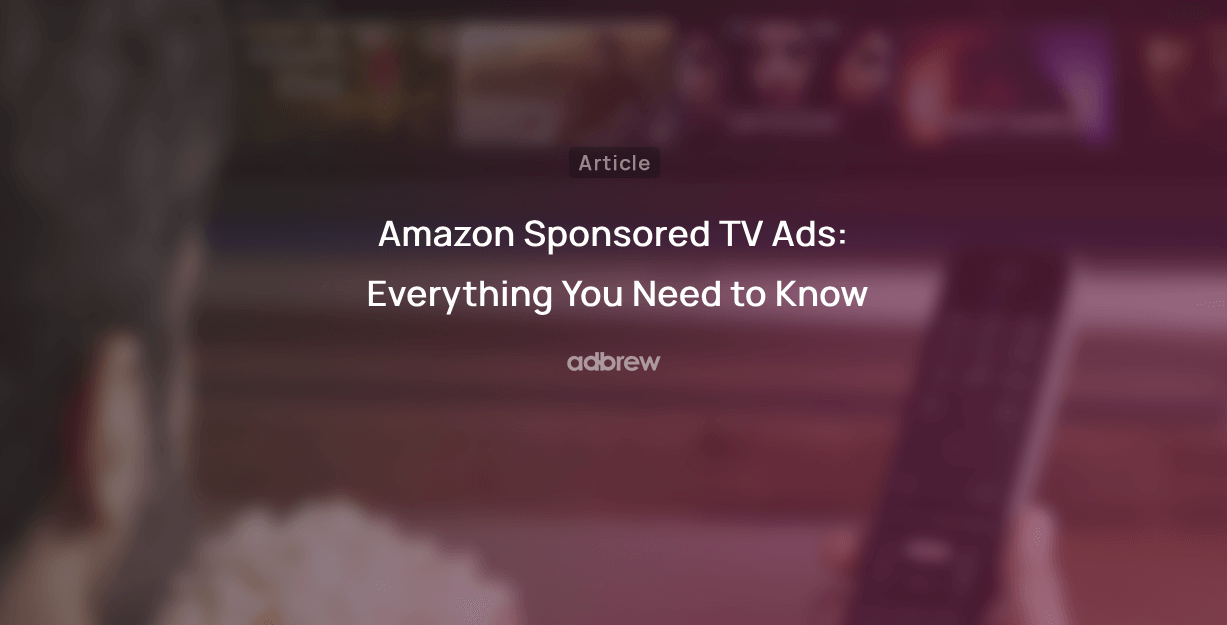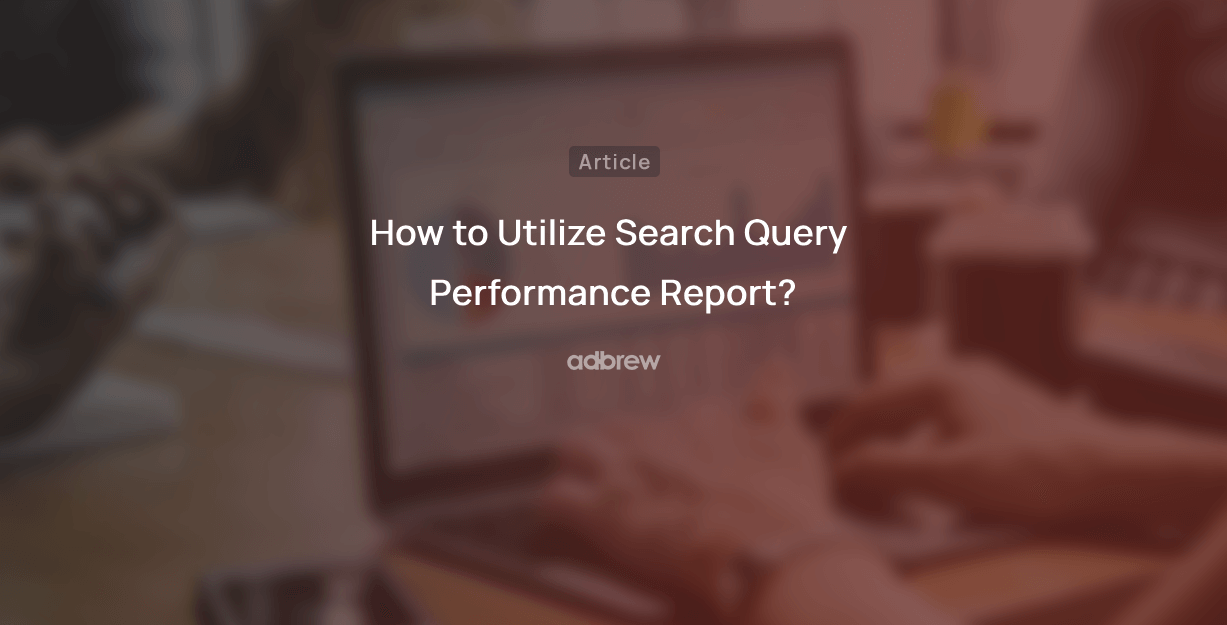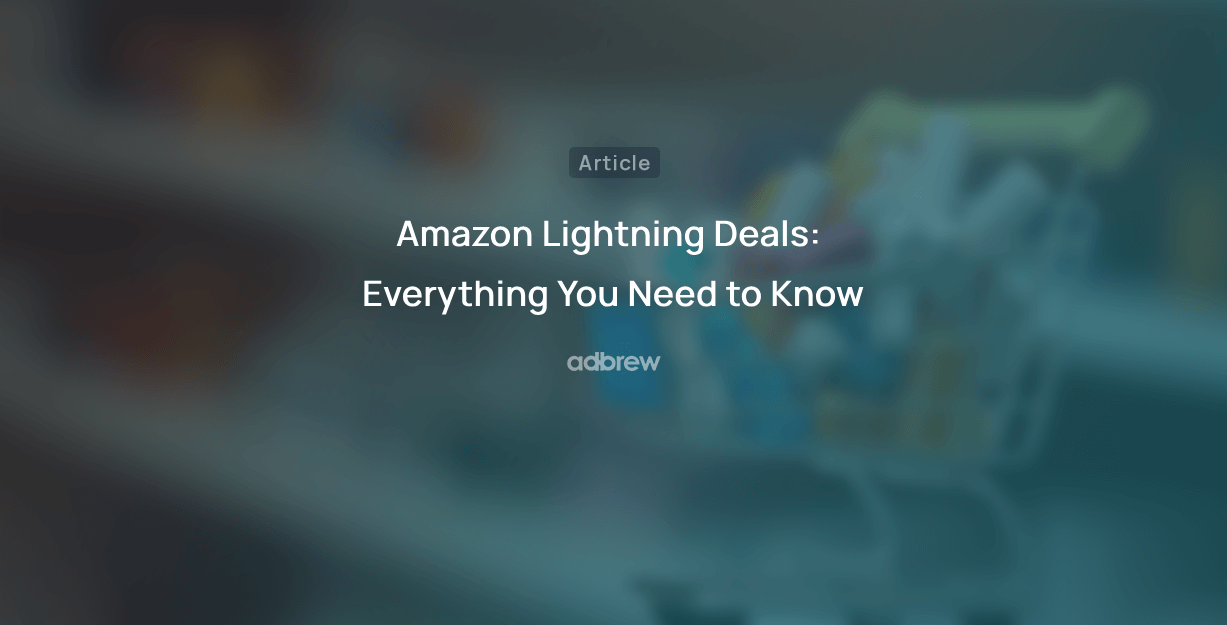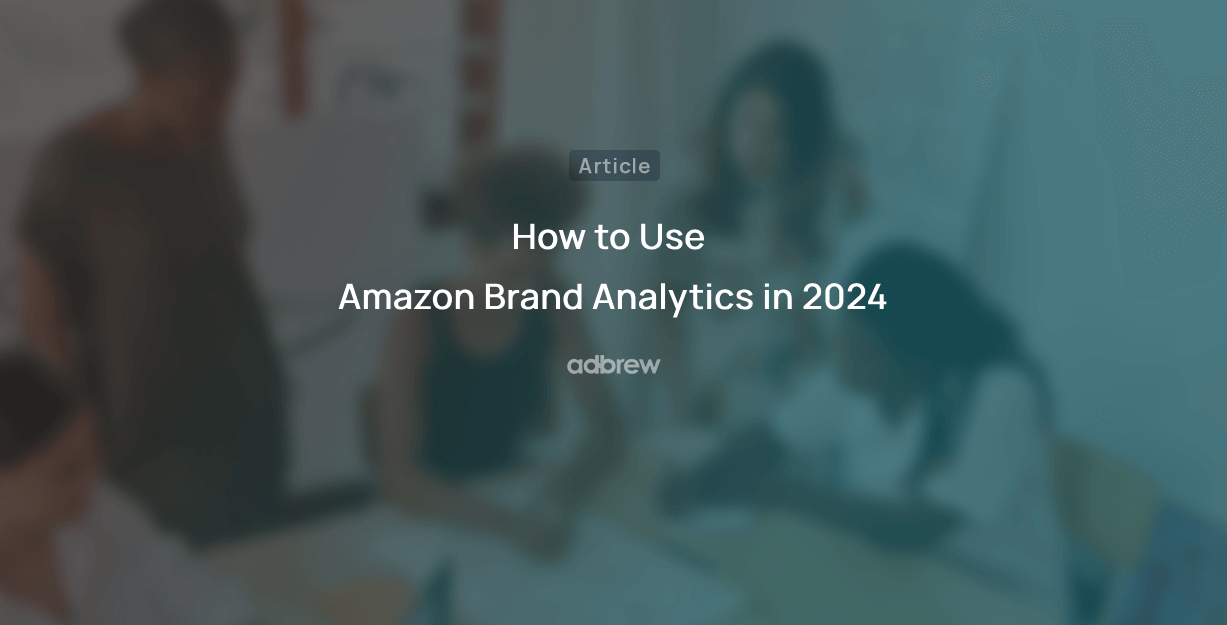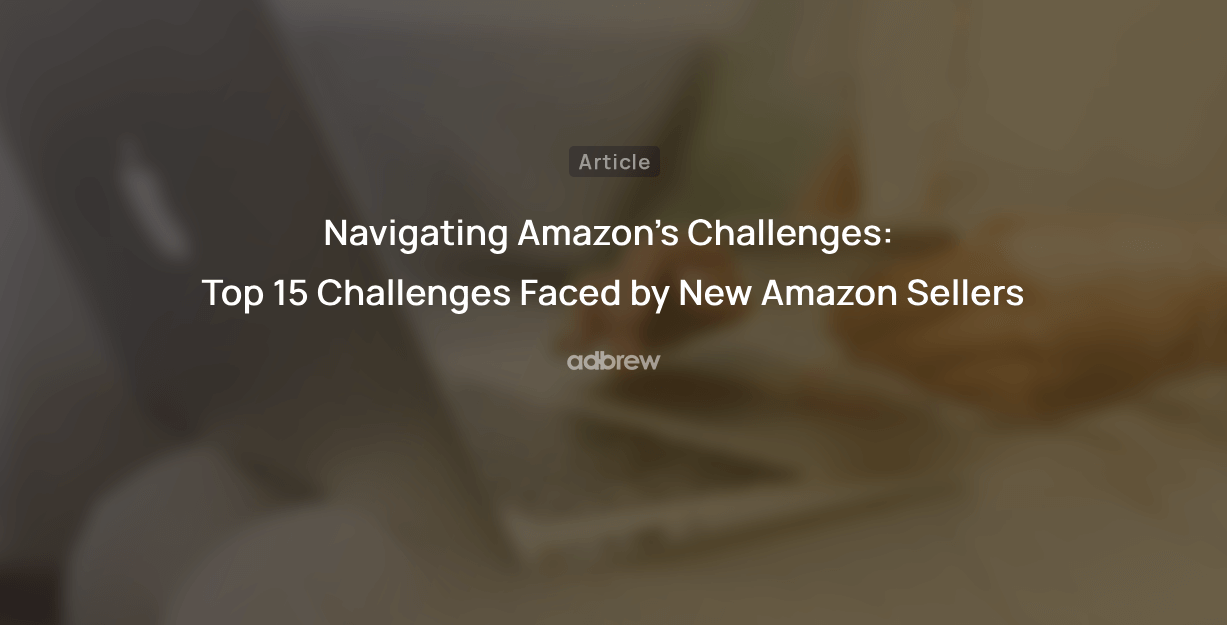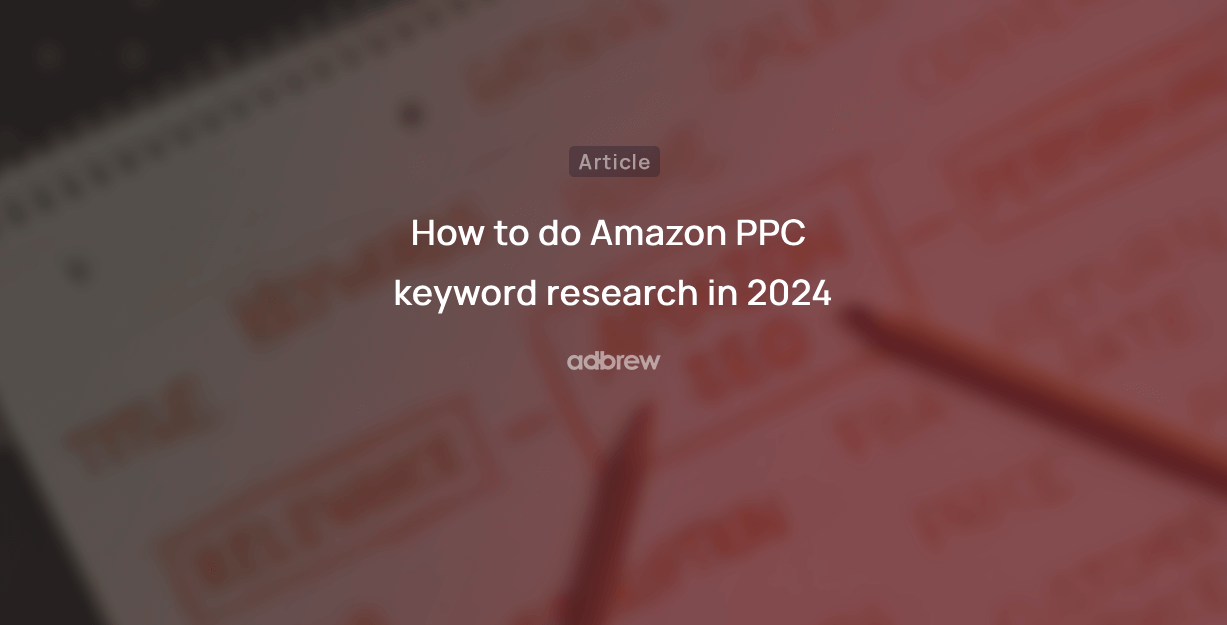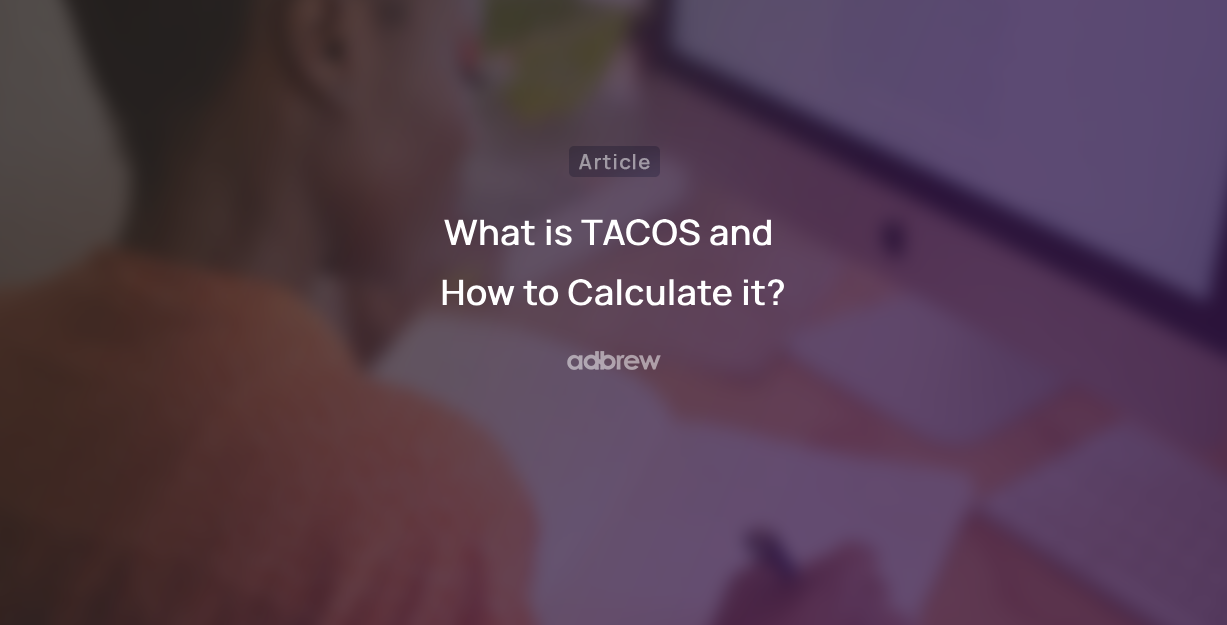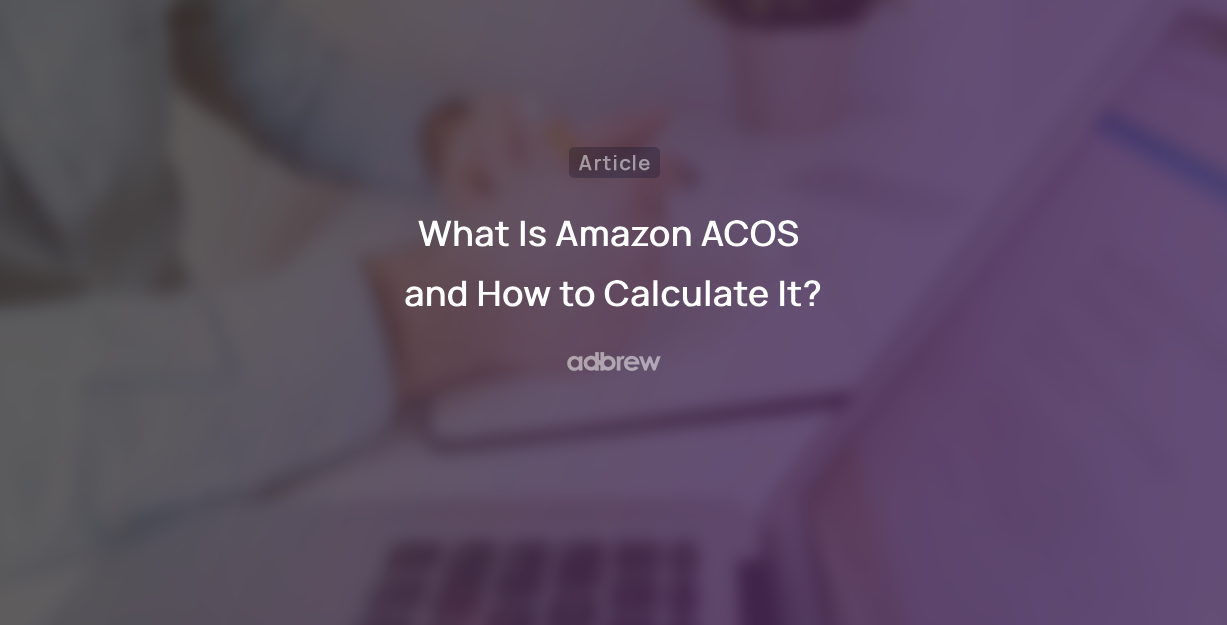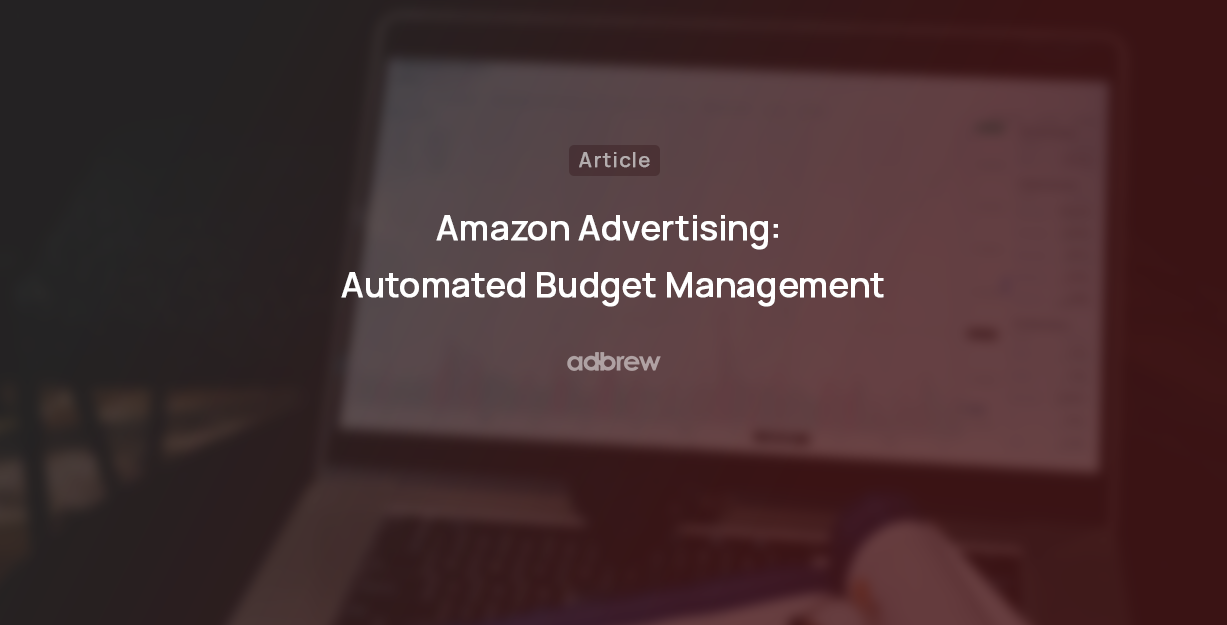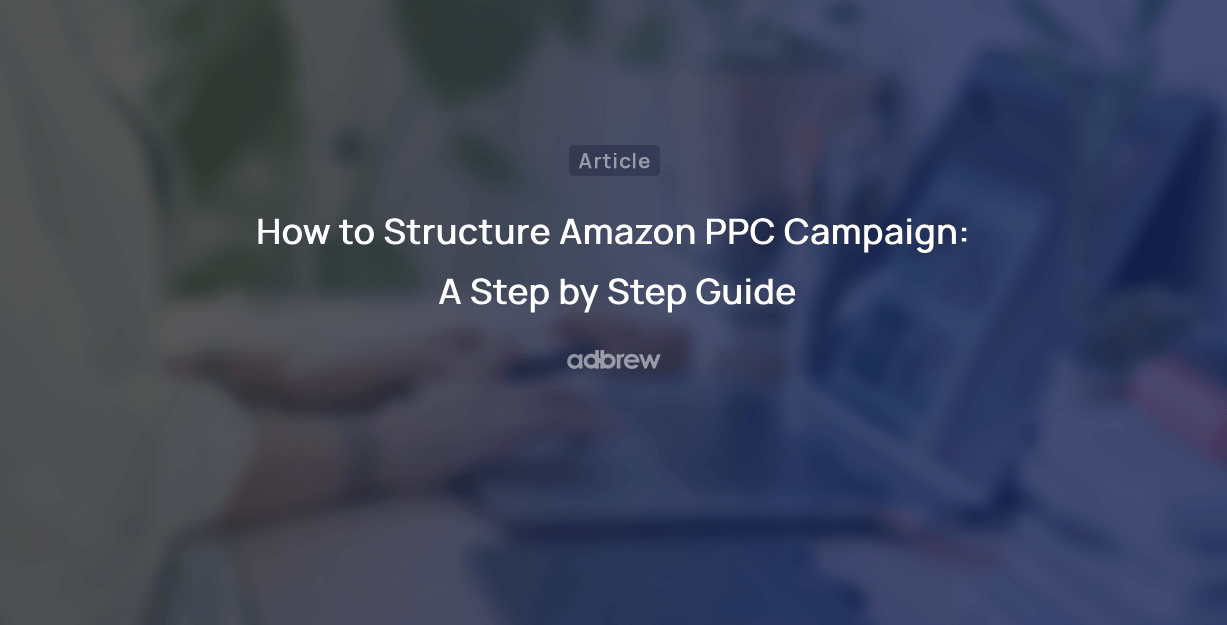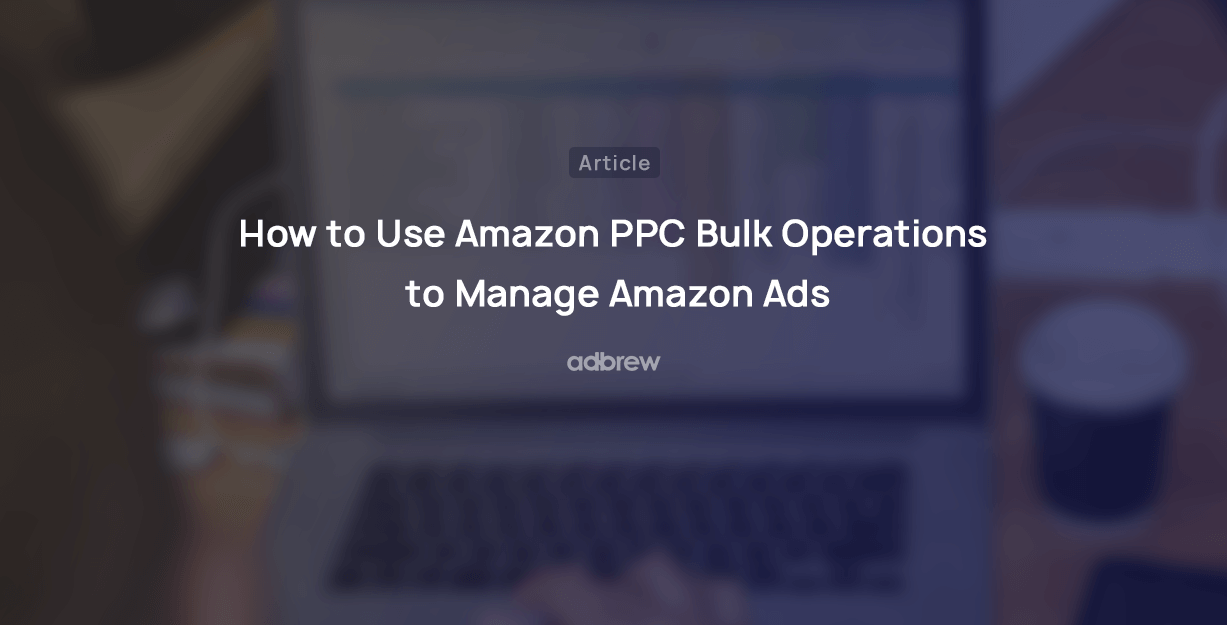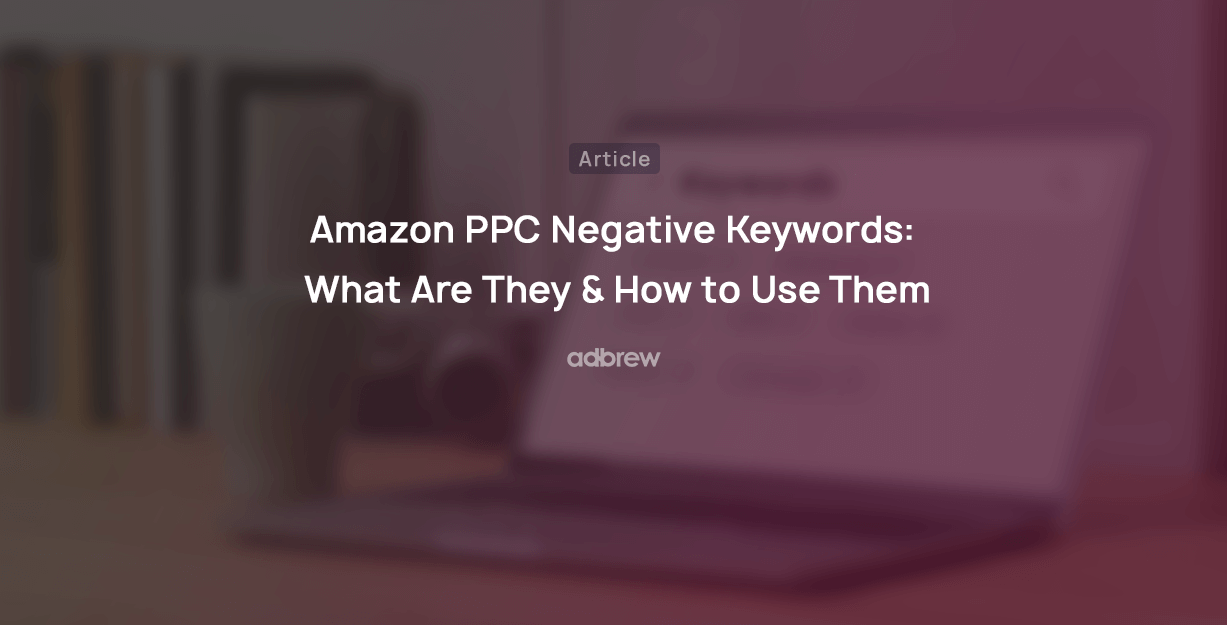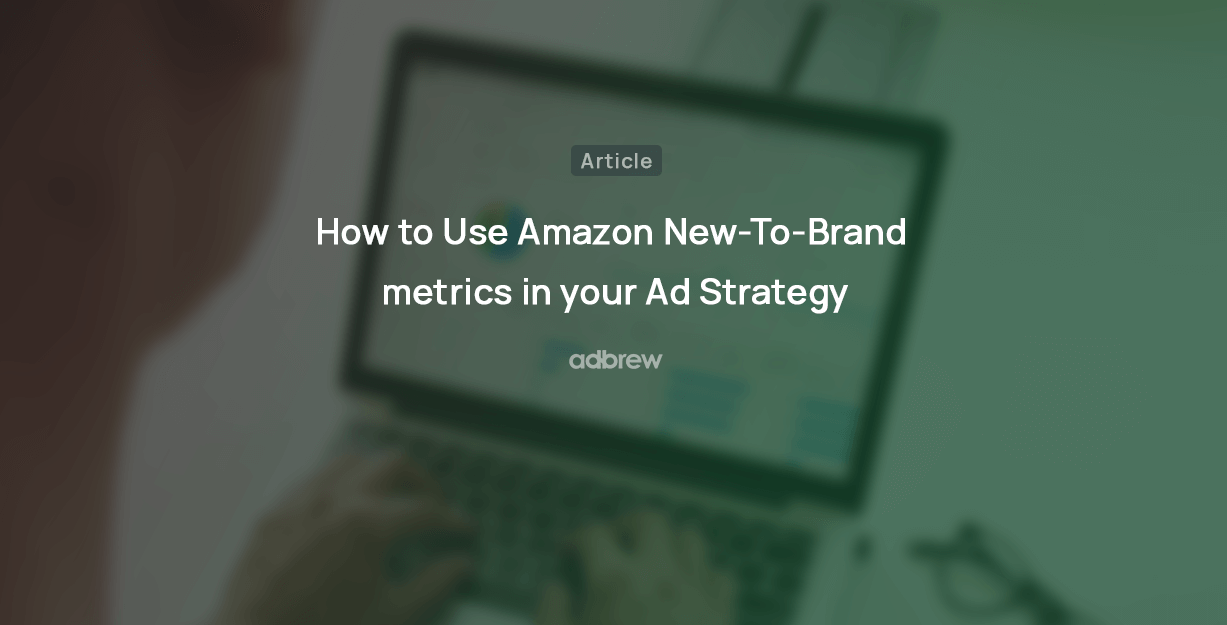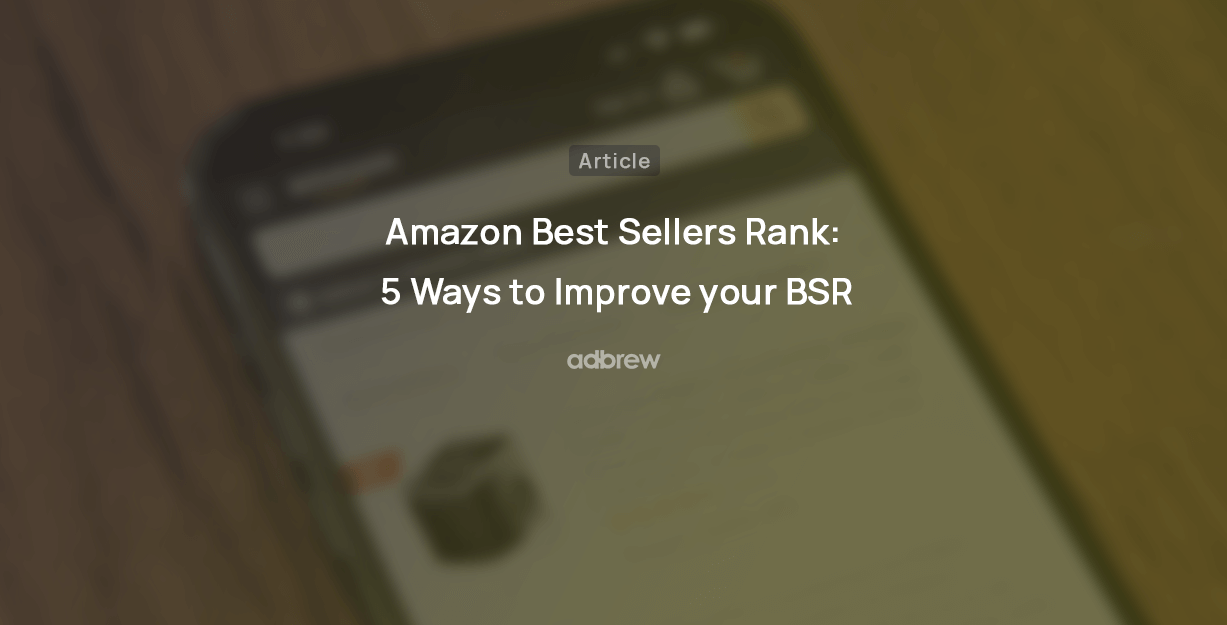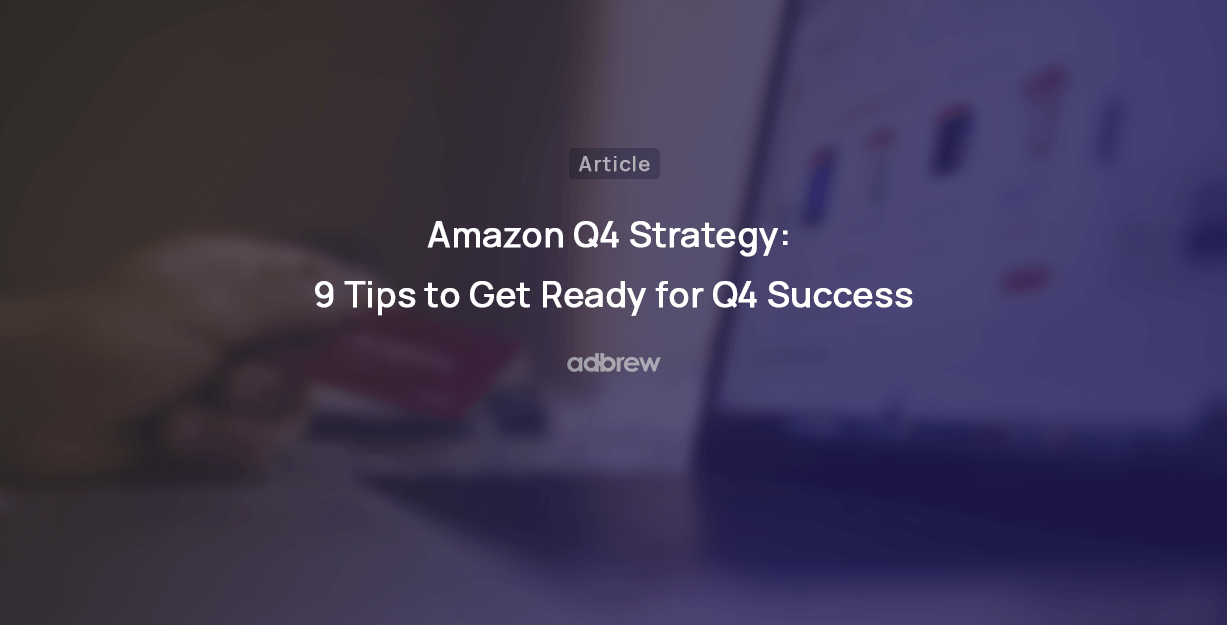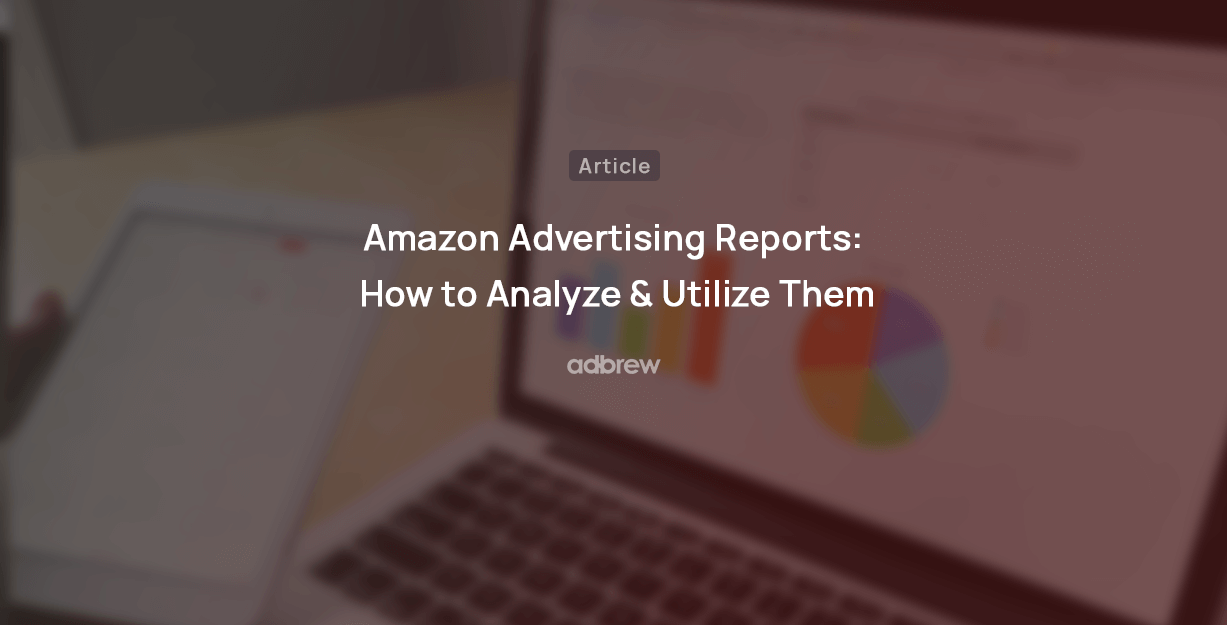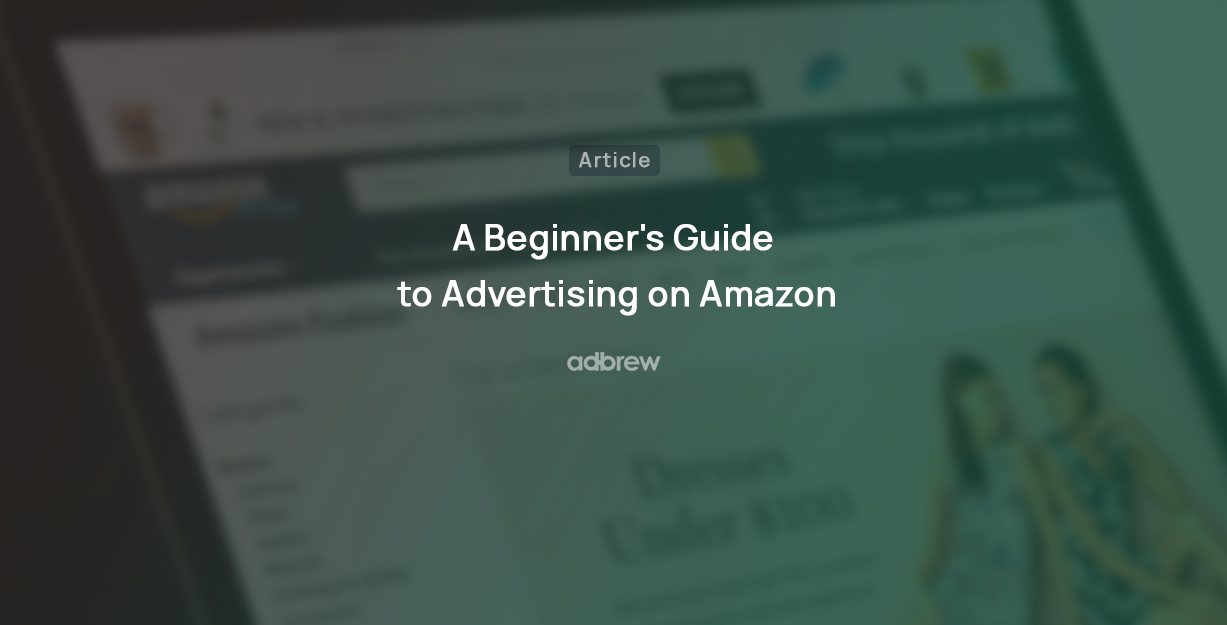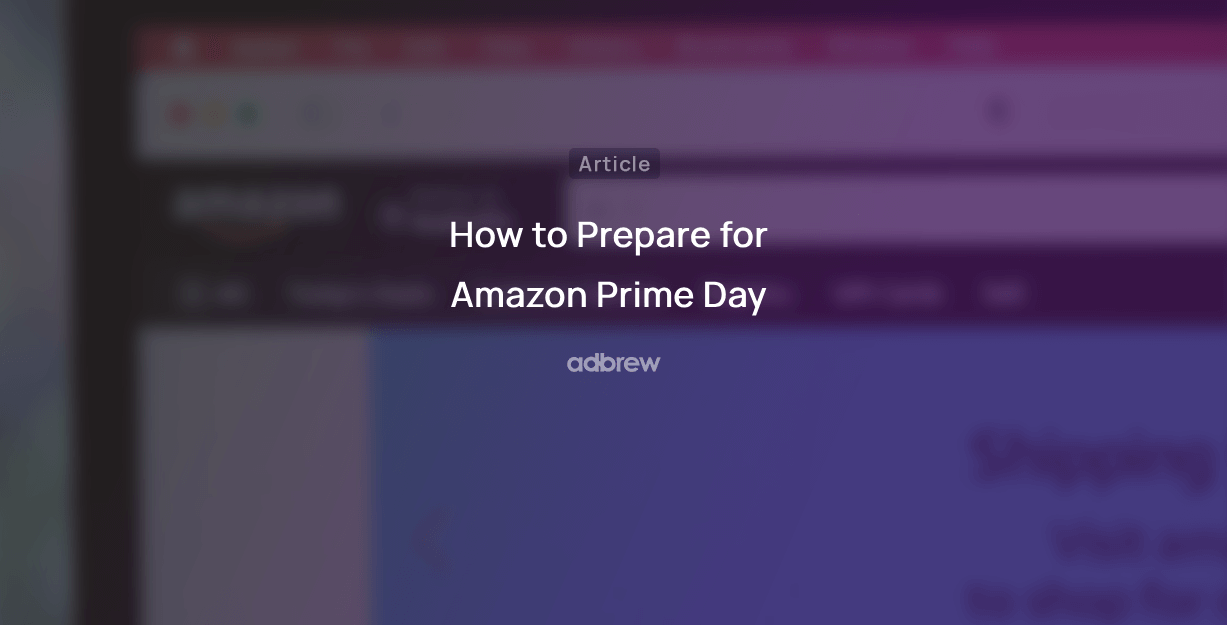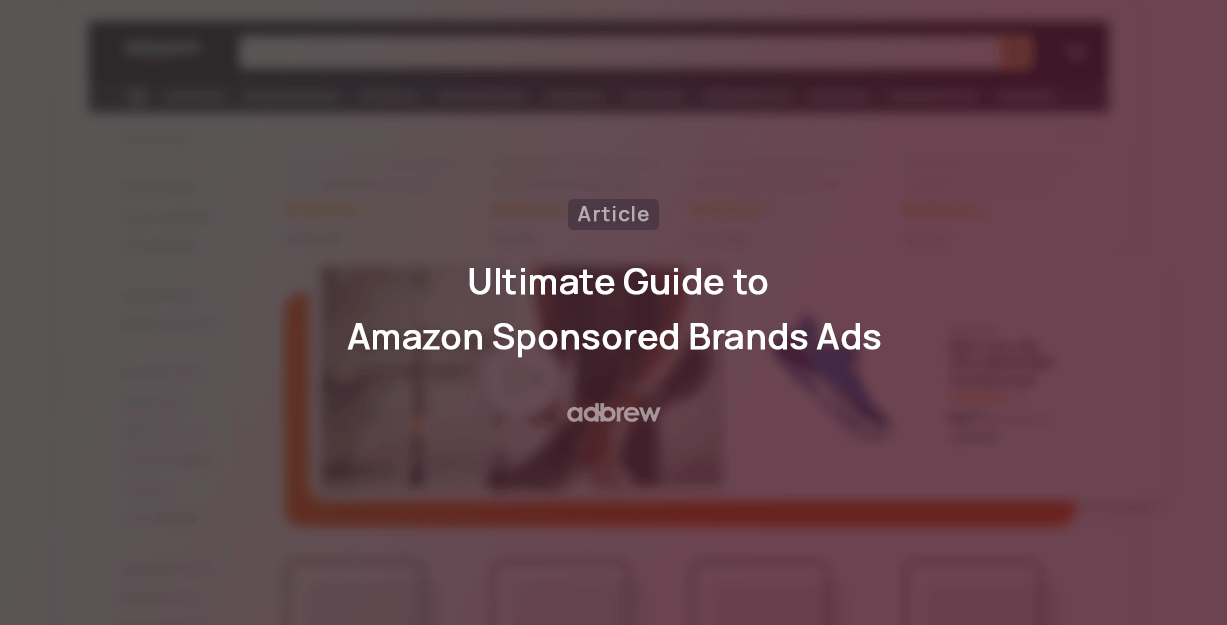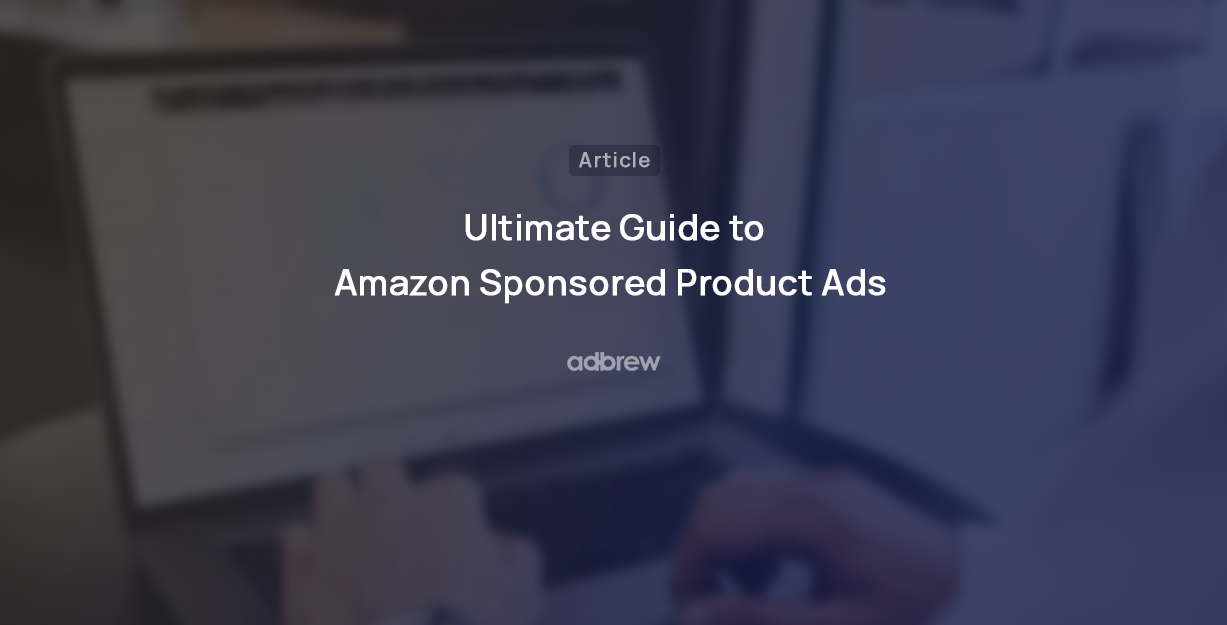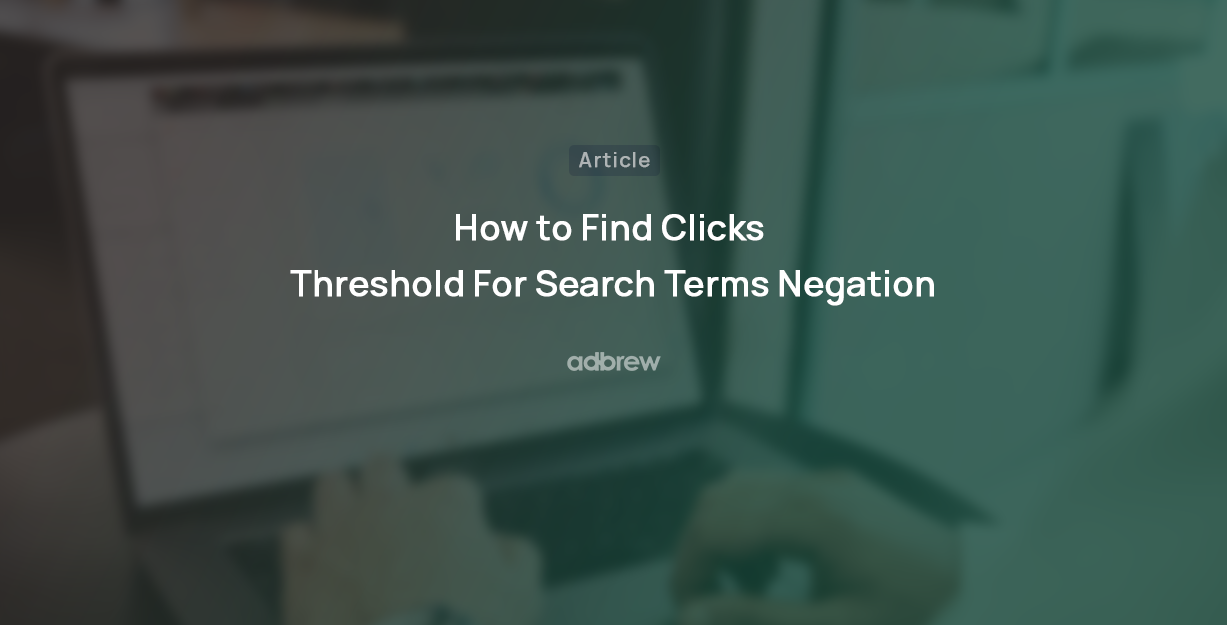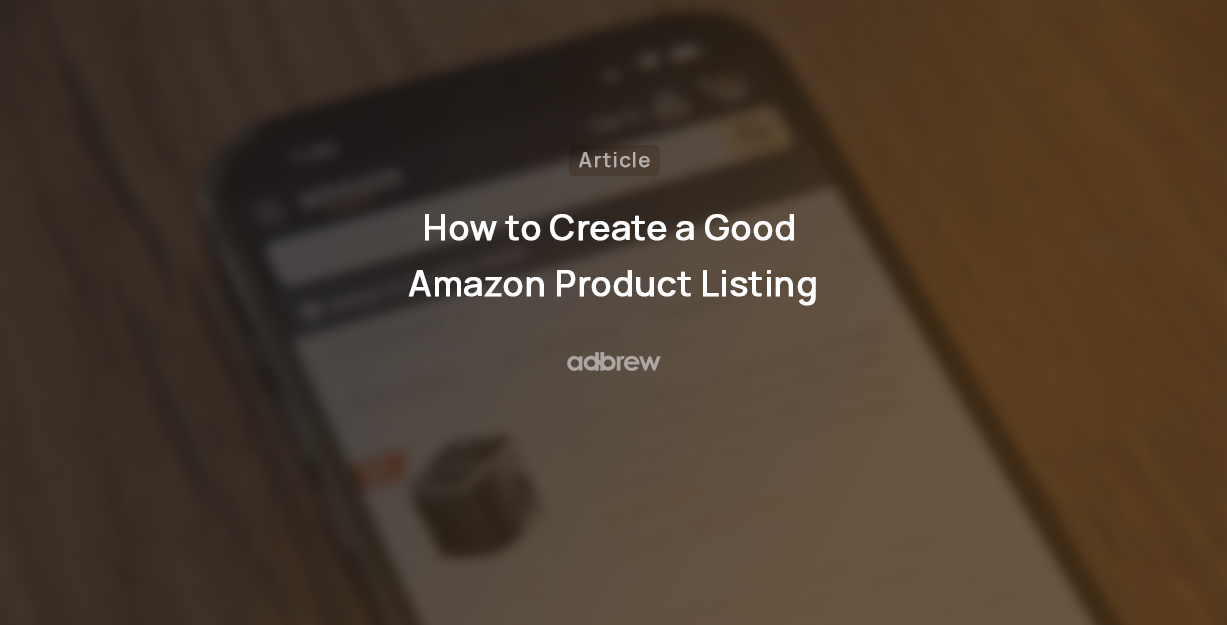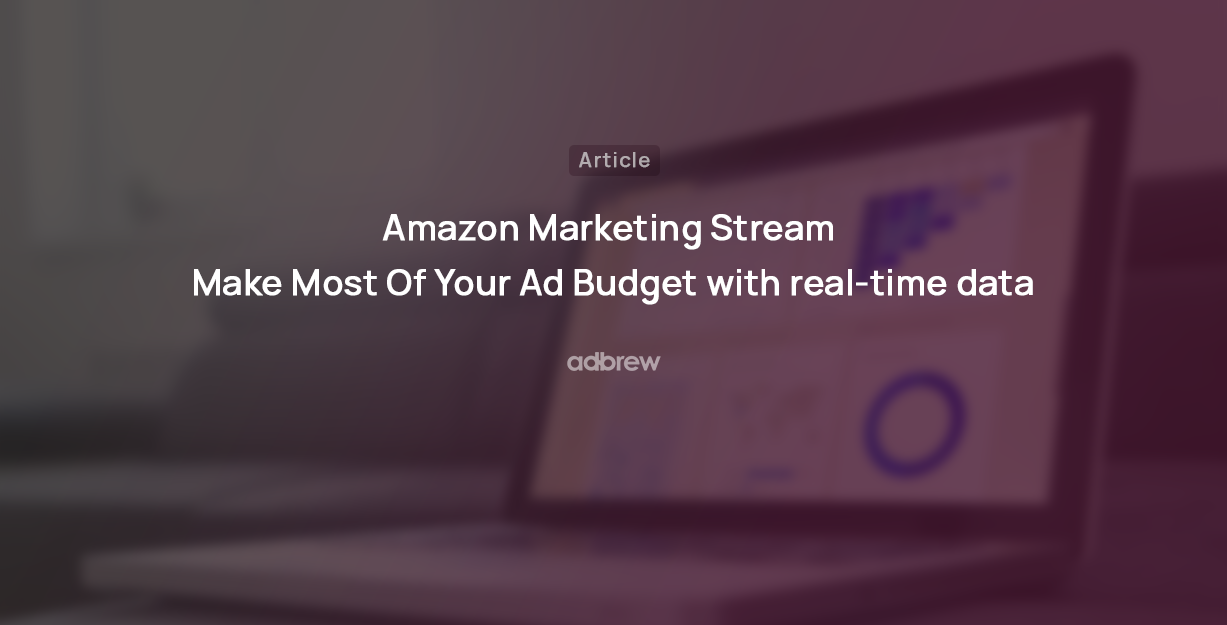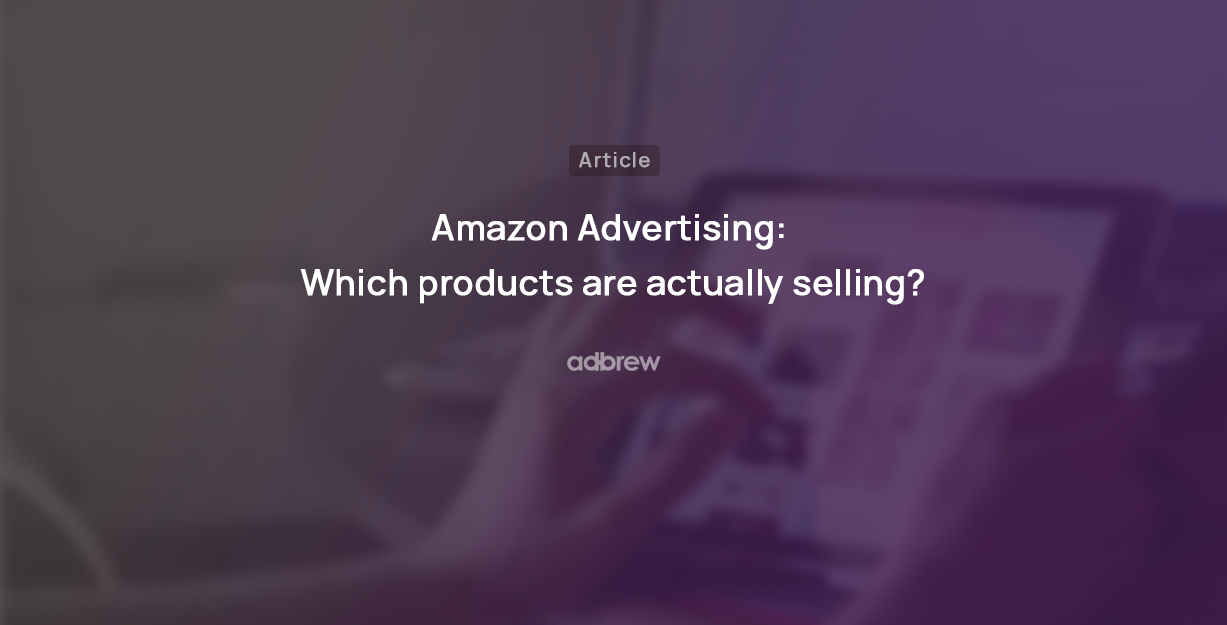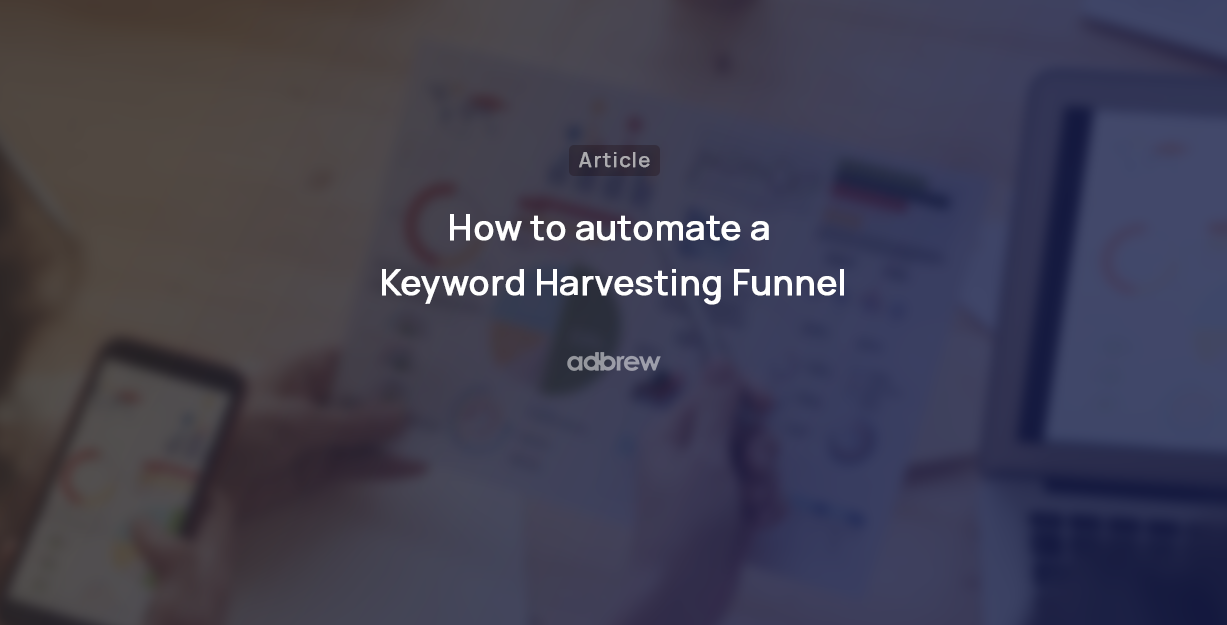Sponsored Product Ads are a form of advertising on Amazon that allows you to bid on specific keywords in order to increase the visibility of your product in search results. These ads are pay-per-click, meaning you pay a small fee each time someone clicks on your ad. Sponsored Product Ads are visually similar to organic listings, which makes them attractive to potential customers. You can identify an SP Ad by a “Sponsored” tag in the description. A picture below shows Sponsored Product Ads appearing in orange block.
We, at Adbrew catalyze millions of dollars of ad spend monthly through our platform, with Sponsored Product Ads being the largest contributor to the success of our clients. So, it is crucial for every performance marketer and brand owner to have a thorough understanding of this type of advertising.
What are Sponsored Product Ads?
Introduction

Placements
Sponsored Product Ads can appear on search result pages or on product pages in various locations. These ads can be triggered by keywords or product targets (ASINs, categories, etc). In case of keywords, they’ll appear when a user searches for those keywords or when a product that is relevant to those keywords is displayed on a product page. In case of product targets, they’ll appear on relevant product pages or on keywords for which the relevant products rank. The three types of placements available are:
- Top of Search: The most desirable location for Sponsored Product Ads is on the first page of search results at the top. This spot allows products to be seen by potential customers first and can help to increase visibility.
- Rest of Search: Sponsored Product Ads can also be displayed on search results pages in locations other than the top of the first page. These ads may appear alongside or within organic results further down the page or on subsequent pages of results. They essentially have lower bids than the former.
- Product Pages: Sponsored Product Ads often appear on Product Detail Pages, located below the product listing. These ads typically feature similar products to the one being detailed on the page. This can be a useful strategy for advertisers trying to display ads on a competitor’s product pages, or to upsell their other products on their own product pages.
Bids
Bids on Amazon are the amounts advertisers are willing to pay for a single click on their ad. When you run an ad on Amazon, you set a bid for how much you’re ready to spend for a customer to click and view your product. Higher bids increase the chances of your ad showing up in prominent positions.
Amazon uses an auction system to decide which ads appear and in what order. Each time a customer searches for something, Amazon compares bids from advertisers targeting those keywords. The ad with the best combination of bid amount and ad relevance wins the placement.
However, you don’t always pay your full bid amount. Amazon charges just enough to beat the next highest bidder, making it a cost-effective system. By setting strategic bids, you can control your ad spend while maximizing visibility for your products.
As per Statista, in 2022, the median cost-per-click (CPC) for sponsored product ads on Amazon in the United States reached $0.98. This marked an increase from $0.90 in 2021, reflecting a year-over-year growth of approximately 9%. Cost-per-click is calculated by dividing the total advertising expenditure by the total number of clicks generated.

Amazon now allows you to further increase your bids on Amazon Business. It will help you bid more aggressively specifically for audience using Amazon Business platform. It appears as is in the illustration above.
In August 2023, Amazon announced that Sponsored Products ads would expand their reach by appearing on high-profile platforms like Pinterest, BuzzFeed, Hearst Newspapers, Raptive, Ziff Davis, Lifehacker, and Mashable. These ads, when displayed on external websites and apps, will direct users to the respective Amazon product detail pages.
This new feature is enabled by default, requiring no additional setup from advertisers. Amazon explains, “Sponsored Products ads will automatically appear on these platforms when we determine that a shopper might be interested in your product. This determination is based on the context of the page, your campaign details, and the existing cost-per-click settings.”
Advertisers can monitor the performance of these placements by accessing the Sponsored Products placement report.
Audiences

Amazon now allows you to increase bids for different custom audience created in Amazon Marketing Cloud (AMC).
You just have to choose the custom audience in the drop down as you can see in the illustration above.
What are the Benefits of Sponsored Product Ads?
- Targeted Traffic: One of the main benefits of Sponsored Products Ads is their ability to bring highly targeted traffic to a specific product page. For example, you can target the ASINs of competing products, potentially taking a share of their revenue.
- Controlled Ad Spend: Sponsored Product Ads are campaigns that are divided into various ad groups, keywords and product targets. Because of this structure, you have granular control over your ad spend when running these types of ads.
- Enhanced Organic Ranking : When a product is advertised through Sponsored Product Ads and the ad campaign is successful, it can lead to an increase in customer reviews and ratings for the product, which can also improve its organic ranking.
- Higher ROAS: Sponsored Products Ads can be highly targeted, allowing advertisers to reach a specific audience that is more likely to be interested in their products. This can result in a higher conversion rate and a better ROAS.
- Keyword Research: Automatic Sponsored Product Ads campaigns allows you to identify the most effective keywords with minimal spending. These keywords can then be targeted in other types of ad campaigns to amplify success on Amazon.
- Product Exposure: Sponsored Product Ads can be a powerful way to increase product exposure, especially for newly launched products that may not yet be able to achieve organic visibility. These ads can help to get a product in front of potential customers and increase its chances of success.
What are the different Targeting Types for Sponsored Product Ads?
When setting up a Sponsored Product Ads campaign on Amazon, you have the option to choose between automatic and manual targeting based on the extent of control that you want to have. Both the targeting types are as explained below:
Automatic targeting
With the automatic targeting option, Amazon uses your product listing information to determine which keywords and products your campaign will target. This allows Amazon to select the most relevant and effective targeting options for your campaign, without requiring you to manually select keywords or products.

With the automatic targeting option, you have the option to use four different match types:
Close Match: These ads are shown to shoppers when they use search terms that are closely related to the product being advertised.
Loose Match: These ads are displayed to shoppers when they search for keywords that are only loosely related to the product being advertised.
Substitutes: These ads target shoppers who are interested in similar products, but offered by different brands or category.
Complements: These ads are shown to shoppers viewing detail pages of products that complement yours.
Sellers using automatic targeting campaigns can now extend these campaigns to other Amazon marketplaces where their products are listed. Amazon simplifies this process by converting the campaign budget into the local currency, aligning products with each marketplace, and recommending suitable bids for each region.
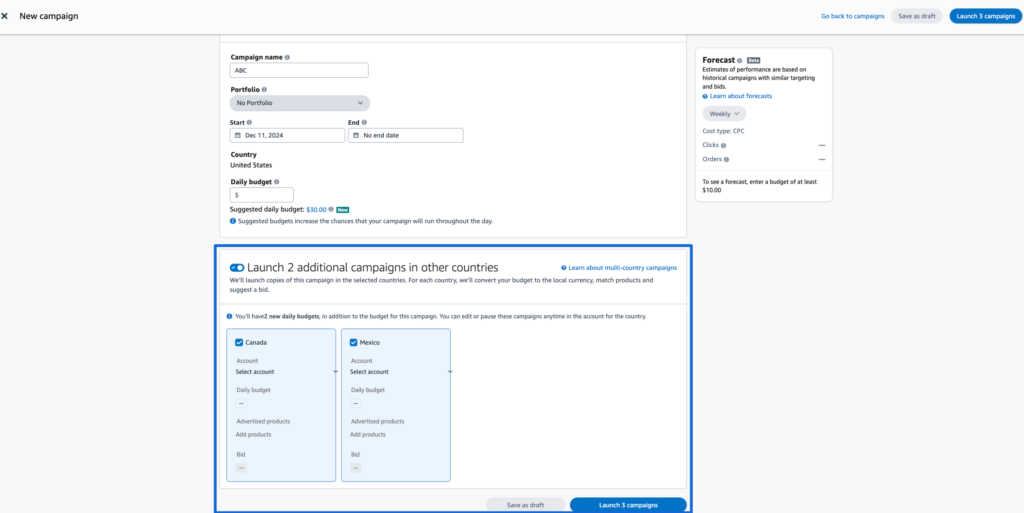
Manual targeting
With manual targeting, you have more control over where and when your ads appear. You can choose specific keywords and products to target and set your bids accordingly. This option is ideal for advertisers with more experience in targeting. You can use the data from your automatic or manual campaigns to optimize and update your campaigns.
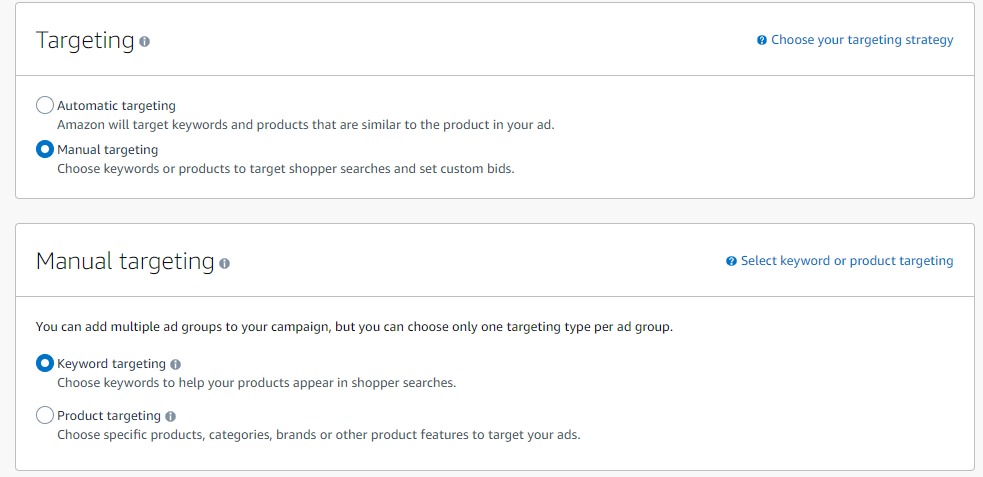
- Keyword Targeting: Keyword targeting in Amazon Sponsored Product Ads allows you to choose specific keywords that you want your products to show up for when customers search for those keywords on Amazon. When customers search for one of the keywords that you have chosen, Amazon’s algorithm will match the products that you are advertising to the search query, increasing the likelihood that the product will be seen by potential customers. This can help to increase the visibility and sales of the your products on Amazon. There are three keyword match types explained in next section.
- Product Targeting: Product targeting can be effective in reaching customers interested in similar or complementary products. Product targeting allows you to focus your ads more specifically and improve ad performance, potentially leading to a higher return on ad spend. It is important to consider both keyword and product targeting as part of a comprehensive advertising strategy on Amazon.
Using product targeting in a Sponsored Product Ads campaign on Amazon you can target the ASINs (Amazon Standard Identification Numbers) of competing products and even defend your own products. This will allow you to run offensive campaigns and potentially capture a portion of your competitor’s advertising revenue. By targeting your competitor’s products, you can reach customers who may be interested in similar products and increase the visibility of your own products on Amazon.
With Sponsored Product Ads, you can also target specific products based on various criteria, such as categories, brands, genres, ratings, and prices. Specifically, Category targeting refers to the practice of targeting specific categories of products in your campaigns. This can be done by either including or excluding specific categories from your targeting.
Need something more intelligent?
You can use Adbrew’s Daily & Hourly Share of Voice (SOV) feature to know your competitor products and subsequently run offensive product campaigns against them with a couple of clicks.
What are the 3 different keyword match types for Sponsored Product Ads?
When setting up a manual Sponsored Product Ads campaign on Amazon, you will have the option to choose the match type for the keywords. There are three match types available:

Broad: With Broad match keywords, Amazon will display your ad to a wider audience by matching your keywords to a variety of related search terms. This allows your ad to be shown to users who may be searching for terms that are similar or related to your chosen keywords.
Phrase: With Phrase match keywords, Amazon will target specific phrases and control the word order. It will eliminate search terms with additional words between the words in your phrase, but will still show for search terms with words before or after your phrase, and variations of your phrase.
Exact: With Exact match keywords, Amazon allows you to show your ad only to users who search for your exact keyword or phrase. This can be an effective way to target qualified traffic and ensure that your ad is only shown to users who are actively searching for the specific product or service you offer.
A table below shows how the implementation of these match types would look like with an example –
What are the bidding strategies in Sponsored Product Ads?

For both automatic and manual Sponsored Product Ads campaigns on Amazon, you must choose a campaign bidding strategy, which determines how your bids are going to increase or decrease while you are running the campaigns. There are three different bidding strategies available as follows:

Dynamic bid-down only: Amazon may decrease your bid if they believe that your ad is less likely to result in a sale. This can help to save your money on each click by reducing the amount you pay for less effective advertisements.
Dynamic bid-up and down: Amazon may increase your keyword bid by up to 100% if they believe that your ad is more likely to result in a sale. On the other hand, if your ad is less likely to convert, Amazon may decrease your bid. This automatic bid adjustment feature can be useful for maximizing the effectiveness of your ads, but it may not be suitable for those who have strict budget constraints.
Fixed bids: Amazon does not alter your bids unless you change them yourself. If you have a specific budget in mind for how much you are willing to pay per click, you can use either fixed bids or down-only dynamic bids to ensure that your bids remain at a consistent level. This can be useful for managing your budget and ensuring that you do not overspend.
Ready to get started with Adbrew?
Adbrew provides cutting-edge automation, expertly curated strategies, and data-driven insights for brands to thrive on Amazon.
How to set up a Sponsored Products Ads Campaign?
To set up a Sponsored Products campaign on Amazon, you can follow these steps:
- Go to the “Advertising” tab in Seller Central.
- Click on “Campaign Manager.”
- Click on “Create Campaign.”
- Under “Choose your campaign type,” select “Sponsored Products.”
5. Under “Settings,” enter your campaign name, desired date range, optional portfolio, daily budget, and targeting type.
Now, you’re in the Campaign Manager. The next steps from here would be unique for you & are as follows –
6. In the Campaign Manager, create an ad group with a custom name to help you stay organized as you launch more campaigns. For example, if you are running campaigns for different match types, you can name the ad group based on the match type.
7. Choose your targeting type: product or keyword. It is generally recommended to start with keyword targeting, as this allows you to reach a wider audience.
8. Under keyword targeting, you can add keywords to your ad group. Amazon will suggest keywords to target and provide a suggested bid amount per keyword. You can also enter your own keywords from your keyword research.
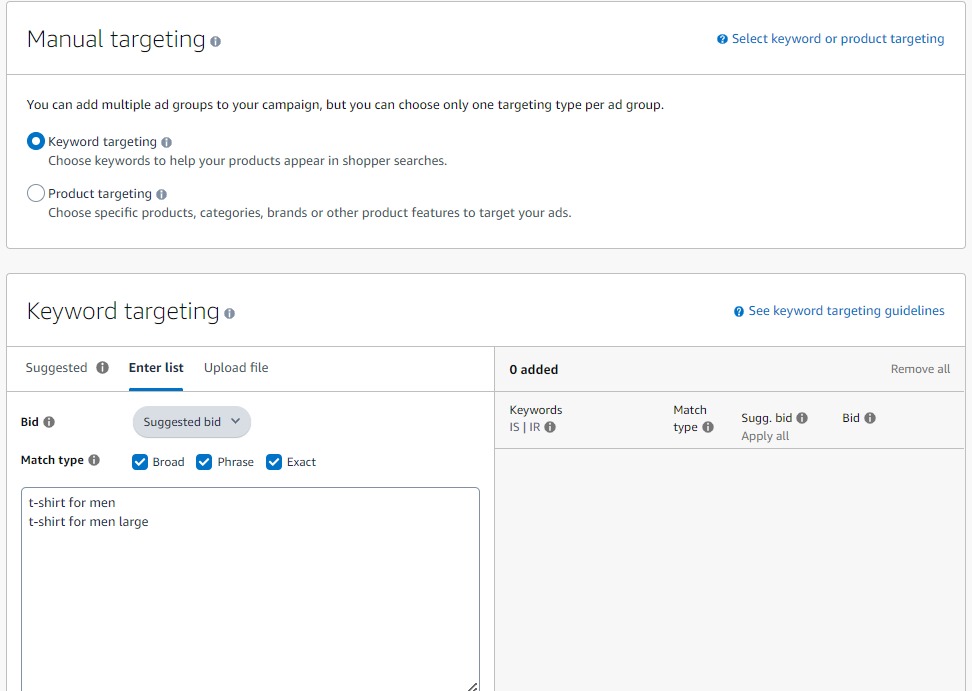
9. While adding keyword targets, you’ll be asked whether you want to add the keywords as exact targets, as phrase targets or as broad targets (as displayed in a picture in match types section)
10. For both automatic and manual campaigns, you need to choose your campaign bidding strategy — how you want to pay for clicks on your ads.
11. Add negative keywords to exclude searches that are not relevant or do not convert. Negative keywords can help improve the performance of your campaign by preventing your ads from being shown to irrelevant customers.

12. Click “Launch Campaign” to start your Sponsored Products campaign.
Looks too hectic right?
Adbrew’s Campaign Launcher allows you to use intelligent automation to efficiently set up and manage your advertising campaigns. These features can help you streamline the process of creating and launching campaigns on Amazon, saving you time and effort.
How to optimize Sponsored Product Ads Campaigns?
Once your Sponsored Product Ads campaign has been up and running for at least 7–10 days, you can start optimizing it to enhance the performance. The fundamentals of optimization are:
- Search term negation: Your Auto and Broad match campaign can trigger your ads on a lot of irrelevant search terms. You need to make sure that you negate those and reduce ads spend leakage.
- Bid Optimization: It’s hard to nail the ideal bid for each target during the campaign launch. Thus, you will need to increase or decrease the bids of targets based on their performance and your campaign goals.
- Budget Optimization: If you are working with a limited budget, you’ll need to move the budget from low-performing campaigns to high-performing ones.
- Target Harvesting: Move the good-performing keywords and ASINs from a campaign with a broader reach (like auto or broad match) to a more hyper-targeted campaign (like phrase& exact match) to get more control over those highly profitable targets.
- Bid Adjustment by placement: As discussed above in this blog, Amazon gives you the flexibility to increase bids for top-of-search and product page placement. Once you have some data, increase or decrease (can’t be less than 0%) the bids for placement based on their performance and your goal with the campaign.
These are some key strategies for optimizing your Sponsored Product Ads campaign. By following these steps, you can improve the performance of your ads and drive more sales for your products on Amazon.
Need something more efficient?
Adbrew offers you multiple account-level views for products, keywords and search terms that can give you a clear idea as to what is working for you and what is not. Moreover, you can automate your keyword movement from auto to manual campaigns, or do negation of bleeding search terms using target movement automation in Adbrew.
Forecast
This widget gives you the ‘forecast’ of your performance metrics on the basis of your historical campaign data.
The limitation of ‘Forecast’ is that it doesn’t take into consideration the seasonality of the products which usually results into mismatch of ‘Forecast’ fron the real data.

Conclusion
Domination of Sponsored Product Ads over other ad forms available on Amazon makes it extremely crucial to understand this. Having in – depth understanding of SP Ads will help you immensely in winning on Amazon and in getting a competitive edge on the Amazon marketplace.
Frequently Asked Questions
How can I get more campaign impressions on my Amazon Sponsored Product campaigns?
If you’re not getting enough visibility and want to get more impressions in your Sponsored Products campaigns, you should immediately go on to increase your bids.
Why should I use Amazon sponsored products?
If you’re selling on Amazon, running SP Ads is extremely important. As per Amazon’s revealed data, more than 70% of the sales happen from SP Ads campaigns.
What are the mistakes to avoid with Amazon sponsored products ads?
While running the SP Ads campaigns you should avoid mistakes like neglecting campaign structure, not setting a target ACOS, keeping bids too low and neglecting campaign optimization.
Maximize Your ROI on Amazon Advertising Spend
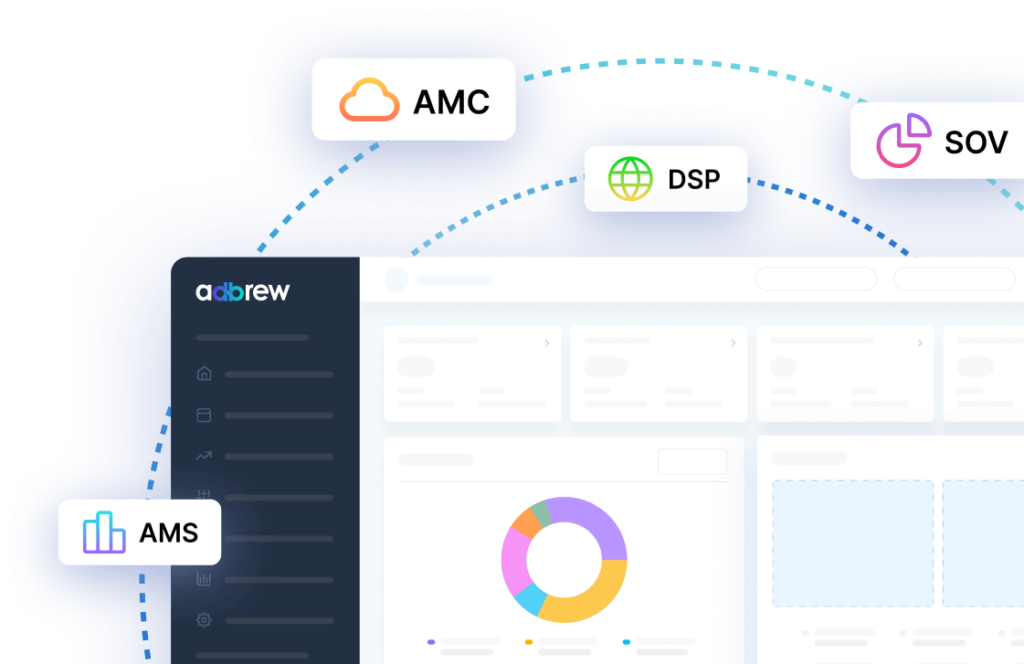
Recent Posts
Take your Amazon PPC advertising to the next level

Related Blogs
Running Amazon ads with an empty shelf? You might as well be burning cash. Many sellers focus on optimizing bids, […]
In today’s competitive digital landscape, growing your eCommerce brand requires more than just a standalone website or a single marketplace […]
Are you an Amazon seller looking to offload excess inventory or seasonal items? The Amazon Outlet program might be just […]
Turning your bookshelf into a source of income has never been easier, thanks to Amazon. If you have books collecting […]
If you’re an Amazon seller, encountering an account suspension or policy violation can be a significant setback. But with the […]
Introduction Amazon dropshipping is an increasingly popular way to run an e-commerce business without the need to store or ship […]
Introduction The Amazon Influencer Program is a great way for content creators to turn their influence into earnings. This program […]
Introduction Amazon Kindle Direct Publishing (KDP) is a platform that allows authors to self-publish their work as ebooks or print […]
Selling on Amazon offers many opportunities for businesses, but it’s essential to understand the costs involved with Fulfillment by Amazon […]
Walmart is quickly becoming a popular platform for brands and sellers to connect with more customers. One way to boost […]
In today’s competitive retail landscape, reaching the right audience at the right time is crucial for success. Walmart’s Demand Side […]
In today’s fast-paced eCommerce landscape, shoppers demand speedy delivery. Walmart has responded by offering 2-day shipping, giving sellers on the […]
Running successful Walmart advertising campaigns takes more than just setting them up—it requires ongoing optimization. A Walmart PPC (Pay-Per-Click) audit […]
Are you ready to tap into the massive potential of Walmart Marketplace? With millions of daily visitors and a loyal […]
In the world of e-commerce, Amazon and Walmart reign supreme, dominating the retail landscape. These two giants offer vast opportunities […]
Are you a brand owner struggling to maintain control over your products on Walmart? The Walmart Brand Portal is here […]
Are you dreaming of a passive income stream from your Walmart store? The allure of an automated Walmart store with […]
Are you a seller looking to tap into the massive market of private-label brands? Walmart, one of the world’s largest […]
Tired of your Walmart products getting lost in the shuffle? In this blog post, we’ll dive into the essential strategies […]
Ever wondered why some Amazon sellers seem to have a magic touch with product bundles? It’s not luck—it’s strategy. Bundling […]
If you’re a Walmart seller looking to grow your business through retail media, Walmart Connect could be a game-changer. But […]
If you’re an Amazon seller, you may have noticed a portion of your inventory marked as “reserved” without knowing exactly […]
Have you ever wondered what managing your own Amazon orders is like? Switching from Fulfilled by Amazon (FBA) to Fulfilled […]
Walmart Marketplace offers an exciting opportunity for sellers to reach a vast audience by listing their products on Walmart’s platform. […]
Selling products on online marketplaces has become a vital strategy for businesses to reach more customers. If you’re looking to […]
Are you a Walmart seller aiming to improve your visibility and sales? In this blog, we will explore Walmart SEO, […]
As an Amazon brand owner, maintaining control over your product listings is essential to protect your brand’s reputation and customer […]
Improving your sales on Walmart starts with understanding how to consistently win the Buy Box. Securing this position can make […]
Are you an Amazon seller struggling to increase your rating? A high seller rating is crucial for attracting new customers […]
As an Amazon seller, providing the best customer service is paramount to maintaining a positive customer experience. One key metric […]
If you’re an Amazon seller and curious about Amazon IPI score and its impact on your business, this blog post […]
Introduction Starting an Amazon subscription box business presents a unique opportunity to tap into the growing trend of curated, recurring […]
Thinking about using Fulfillment by Amazon (FBA) to sell on the Amazon marketplace? Awesome! But before you box up your […]
Thinking about using Fulfillment by Amazon (FBA) to streamline your Amazon business? While FBA offers a convenient way to store […]
For FBA sellers, the Amazon Buy Box is the holy grail of product visibility. But with constant algorithm updates and […]
Have you ever wished you could offer customers pre-made packages of complementary products without the hassle of physically bundling them […]
Have you ever wanted to create a more branded and engaging presence for your products on Amazon? An Amazon storefront […]
Are you storing items on Amazon for a while? If so, it’s important to be aware of Amazon long term […]
When selling products on Amazon, it is crucial to follow their packaging requirements, rules, and guidelines. Proper packaging ensures that […]
Amazon A/B testing can significantly enhance your product listings and boost sales. This method, also known as split testing, involves […]
Have you ever browsed Amazon and stumbled upon a product with a little blue badge that reads “Amazon’s Choice“? It […]
Amazon FBA vs FBM needs to be explored, when we ship products and handle orders while selling on Amazon. With […]
Ever feel like you’re missing something in your Amazon PPC Search Terms report? You might be! Sure, they show what […]
Amazon can be a fantastic platform to reach new customers, but keeping your virtual shelves stocked can get tricky. That’s […]
Navigating Amazon as a new seller can be tough, but there are tools and programs available to help such as […]
Have you ever scrolled through an Amazon search result page and noticed product recommendations nestled alongside the standard listings? These […]
Finding time for yourself while selling on a competitive marketplace like Amazon can be challenging. As a seller, your main […]
Starting an E-commerce business has become quite easy with Amazon, but it also brings heavy competition. Millions of Amazon sellers […]
As an Amazon seller, you know the importance of getting your products seen. But with millions of listings, how do […]
Ever scrutinized an Amazon product page and noticed the cryptic “Sales Rank”? Wondering what it means and how it impacts […]
Millions of products compete for customer attention on Amazon’s search results page, making it tough for your brand to stand […]
Are you selling products on Amazon and looking to increase your sales? This blog is for you. We’ll share tips […]
Are you an Amazon seller looking to boost your brand visibility and profitability? Are you feeling stuck in the cycle […]
Ever wonder what drives your online shopping habits? Perhaps a captivating product description, or an eye-catching professional photo? As it […]
For any seller on Amazon, understanding the A9 algorithm is crucial for success. This complex algorithm dictates which products appear […]
Are you an Amazon seller looking to turn those single purchases into recurring revenue? Look no further than the Subscribe […]
Amazon has become a go-to platform for all e-commerce business owners to launch and scale their e-commerce brands online. But […]
Mother’s Day, a time to celebrate the incredible women who raised us, is a prime opportunity for Amazon sellers to […]
In the ever-competitive landscape of Amazon, ranking high in organic search results is crucial for driving sales. While you might […]
If you’ve ever found yourself scratching your head over Sessions and Pageviews on your Amazon business reports, you’re not alone. At […]
Amazon is a massive marketplace, attracting millions of customers with diverse needs, preferences, budgets, and mindsets for shopping. To effectively […]
With Amazon boasting over $575 billion in retail sales for 2023, it’s no wonder so many sellers flock to its […]
Advertising on Amazon through pay-per-click campaigns can significantly enhance product visibility and sales for sellers. However, mastering Amazon PPC, with […]
Have you heard of the terms copyright infringement and plagiarism? If so, then Amazon Brand gating won’t be unfamiliar to […]
If you are running ads on Amazon, you’ll come across a sea of data in your advertising console. But does […]
Have you heard of the terms copyright infringement and plagiarism? If so, then Amazon Brand gating won’t be unfamiliar to […]
In the fast-paced world of e-commerce, where shoppers are bombarded with choices, standing out on platforms like Amazon is paramount […]
Are you planning to start an Amazon FBA store? If so, you’ll encounter a unique term – FNSKU. This seemingly […]
As an Amazon seller, you understand the power of reviews. They’re the lifeblood of trust and conversion on the platform. […]
Are you struggling to get Amazon reviews on your product? Well, you are not alone! Reviews are the backbone of […]
Are you tired of bland Amazon product listings failing to grab attention? In today’s competitive online marketplace, standing out is […]
As an Amazon seller, understanding how your brand performs throughout the customer journey is vital for success. However, until recently, […]
As an Amazon seller, optimizing your business and maximizing profits relies heavily on data analysis. One invaluable tool for gaining […]
Are you struggling to get noticed on Amazon’s massive platform? Do your products get lost in a sea of similar […]
For any Amazon seller getting into the world of sponsored advertising, understanding the Advertising Cost of Sale (ACoS) is crucial. […]
A well-executed Amazon product launch strategy can be the key to unlocking success and gaining a competitive edge. As the […]
In the ever-evolving landscape of e-commerce, distinguishing between keywords and search terms is vital for optimizing product visibility and driving […]
Ever felt like you are throwing darts in the dark when it comes to your marketing efforts outside Amazon for […]
Amazon, the e-commerce giant, has successfully concluded a robust business year with outstanding performance in quarter 4. The most recent […]
Picture this: you have a great product on Amazon, but it’s not selling well despite having attractive images and a […]
The advertising landscape is evolving, and viewers are rapidly migrating from traditional cable TV to streaming platforms. This presents a […]
Feeling lost in the Amazon discount jungle? Struggling to reach the right customers and entice them to make the purchase? […]
Are your products getting lost in the vast ocean of Amazon listings? Do you want them to stand out, rank higher, […]
For years, Amazon sellers were in the dark. They couldn’t see what keywords customers were using to find their products, […]
Selling on Amazon can be tough with so many others doing the same in your category. That’s why it’s super […]
For Amazon sellers, understanding their customers has often felt like navigating a maze without a map. The missing link? A […]
Have you ever felt like your Amazon advertising campaigns are lost in a tangled jungle of keywords? You’re not alone. […]
When did you last give your Amazon PPC account a checkup? Regular Amazon PPC audits are crucial to ensure the […]
Embarking on the path of online selling? If so, you’re likely aware that Amazon is your ultimate destination. With a […]
Ever felt like your product is lost in the vast Amazon jungle? You’re not alone. With millions of shoppers actively […]
Amazon Sellers selling on the Amazon marketplace usually utilize Amazon advertising without keeping a close eye on the TACoS metric. […]
The rush of Black Friday and Cyber Monday might be over, but the opportunity for continued sales growth extends beyond […]
In the fierce Amazon advertising domain, where competition rises and costs increase, understanding and keeping track of the right metrics […]
Have you ever felt the frustration of campaigns going out of budget, leading to missing out on potential sales, or, […]
Amazon PPC campaigns can be a powerful tool for driving traffic and sales to your products. However, without proper structure, they […]
Whether you are creating a new advertising campaign or optimizing existing ones, doing it manually from the Amazon ad console […]
Want to know what search terms people use to visit or purchase your product on Amazon? If yes, you’re in […]
When you are spending dollars or even more to get a click on your Amazon ads, you want to ensure […]
Are you an Amazon seller looking to maximize your profits and minimize your advertising costs? If so, you’re not alone. Many […]
Are you exclusively relying on traditional metrics such as CTR, CPC, CVR, or ROAS to make your campaign optimization decisions? […]
Navigating the ever-evolving landscape of Amazon’s online marketplace is essential for any seller looking to thrive on the platform. Among […]
As the holiday season approaches, businesses are gearing up for the highly anticipated Q4 rush. To ensure a successful Q4, […]
Do you regularly review your Amazon advertising reports? If not, you may be missing out on numerous opportunities. Amazon […]
Whether you’ve just launched a new product or have been selling on Amazon for a while, advertising on the platform […]
Amazon PPC bidding strategies that you choose play a significant role in the success of your Amazon Ads campaigns. As […]
Have you ever heard of a “catch-all campaign”? This single campaign can generate extra sales for you at a very […]
Amazon Prime Day is one of the largest global e-commerce sales events, attracting millions of customers worldwide. But how do […]
Are you looking to boost your brand’s visibility and drive more sales on Amazon? Look no further than Amazon Sponsored […]
Succeeding on Amazon in 2024 isn’t easy. Just listing your products and hoping for the best won’t work anymore. You […]
Are you bidding the same amount for all your ad placements on Amazon? If yes, then you’re missing out on […]
Whether you are looking to boost product discovery or target audiences further down the sales funnel who have already engaged […]
We, at Adbrew catalyze millions of dollars of ad spend monthly through our platform, with Sponsored Product Ads being the […]
Do you want to know how many clicks you should give a search term before adding it as negative in […]
Think of your product listing as a guiding light on the Amazon marketplace. It’s your chance to grab attention, tell […]
It is no longer a secret that shopping behavior on Amazon varies over the day. This is the reason why […]
Are you struggling to get the most out of your advertising budget on Amazon? Do you find that your campaigns […]
Ever run an Amazon Ad campaign and wondered why some sales weren’t directly linked to the products you advertised? That’s […]
If you’re managing Amazon PPC ads, it’s essential to have an effective and organized approach for target harvesting and movement. […]



